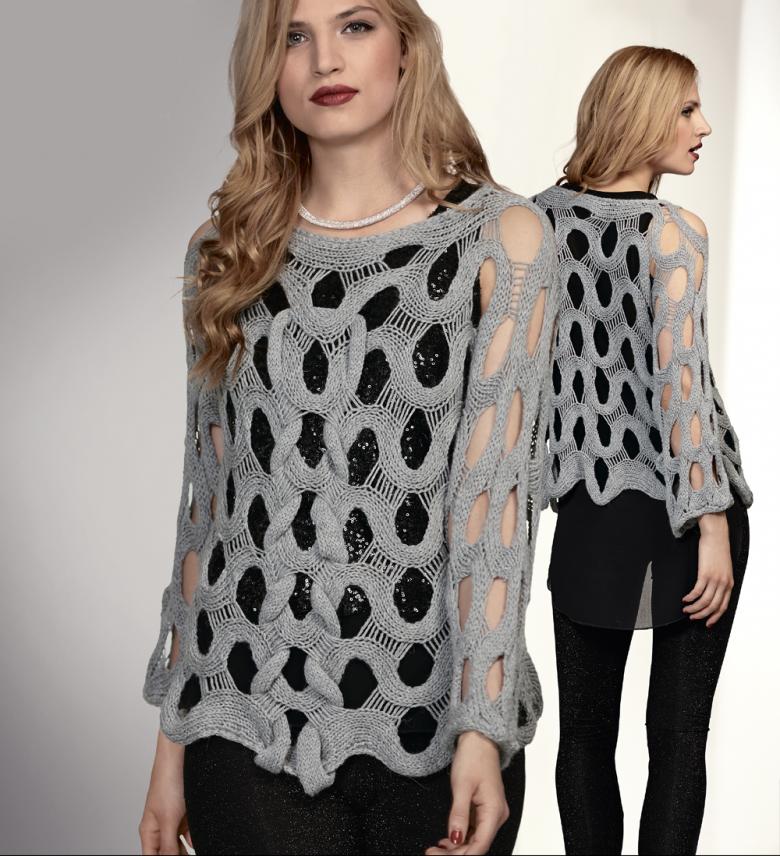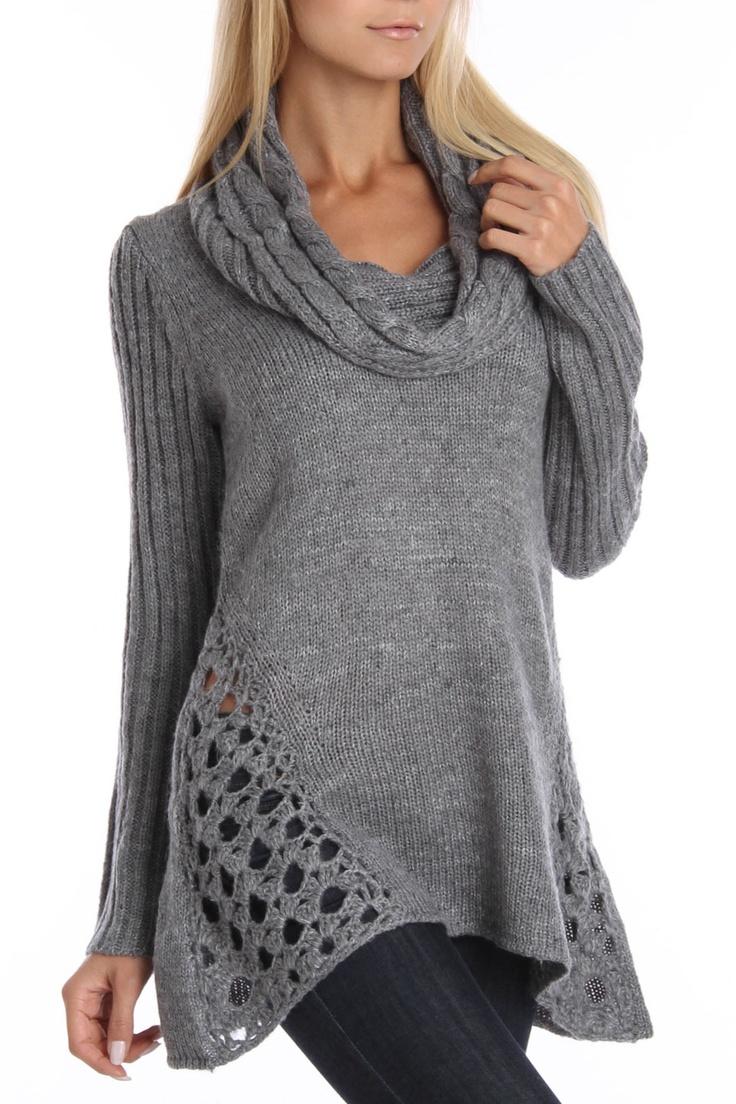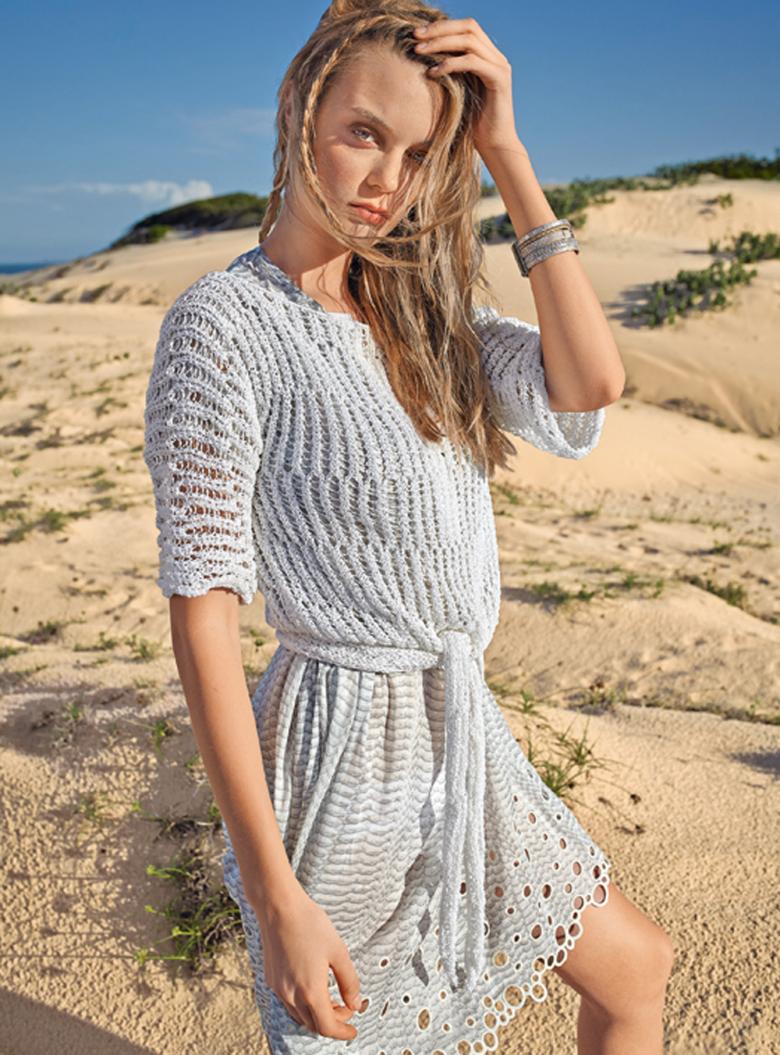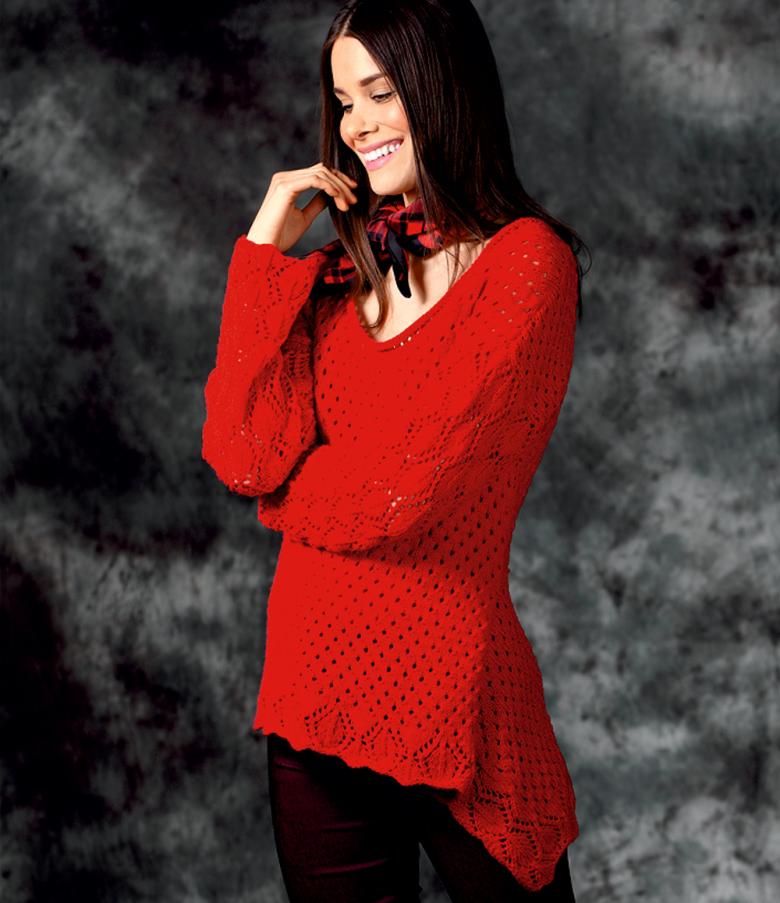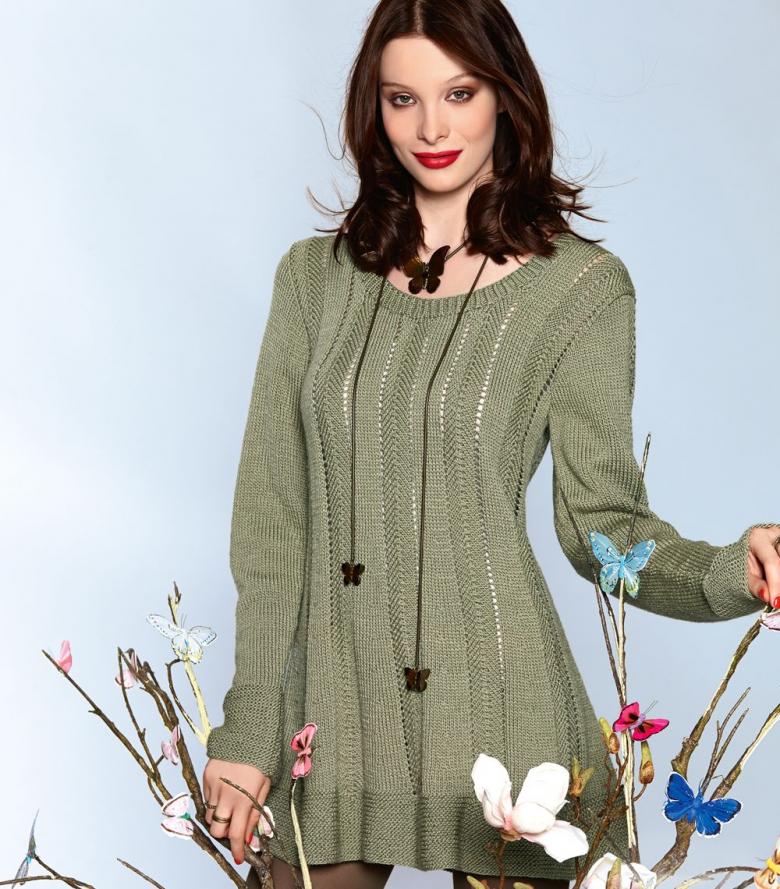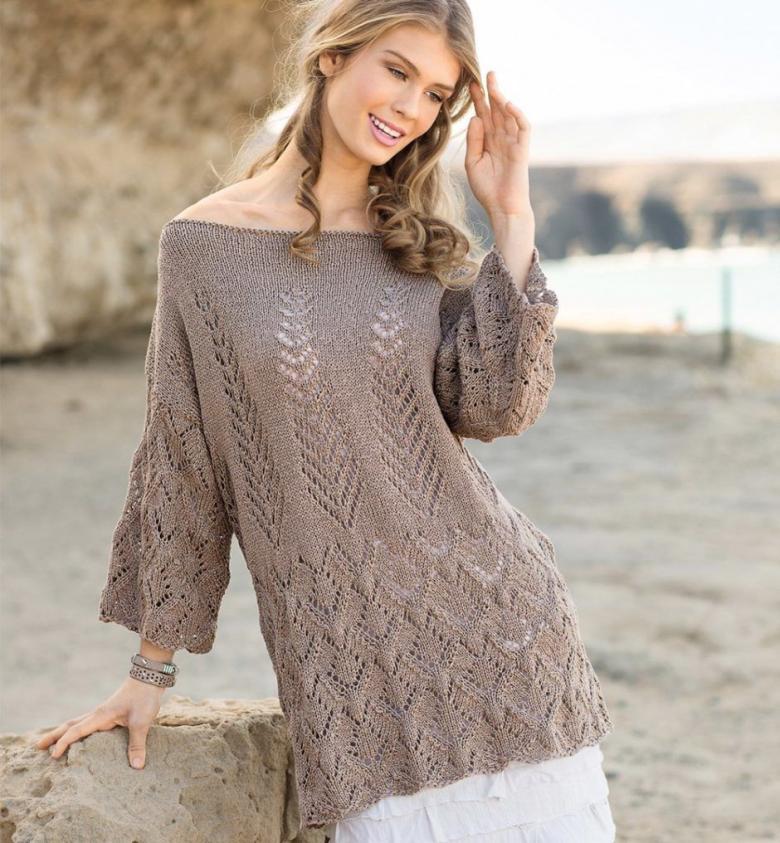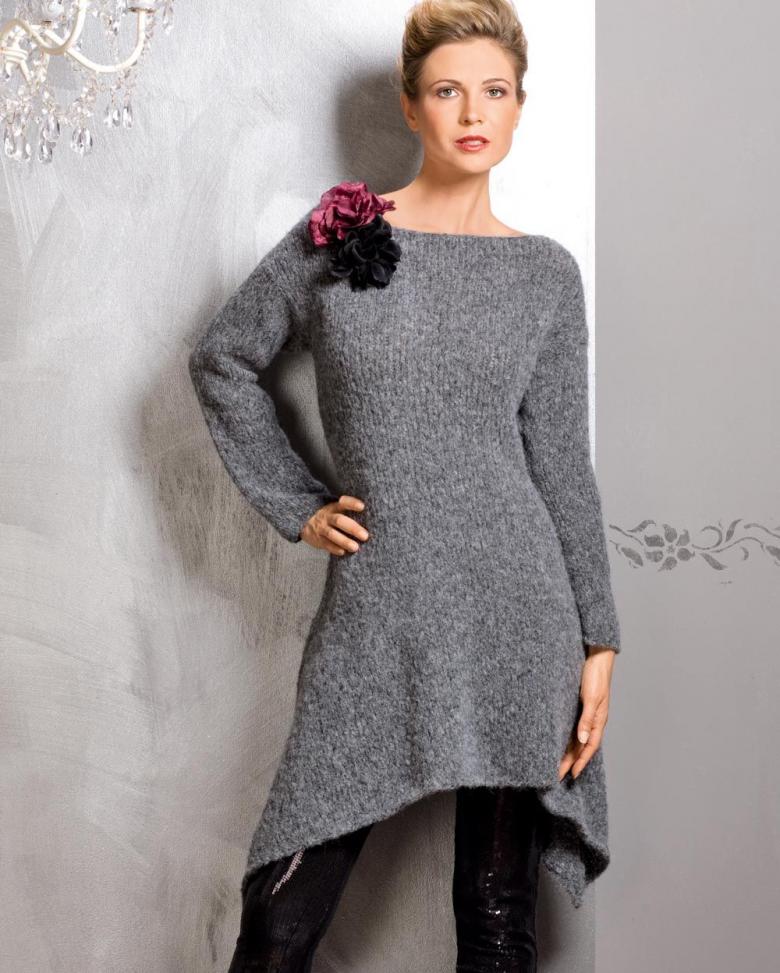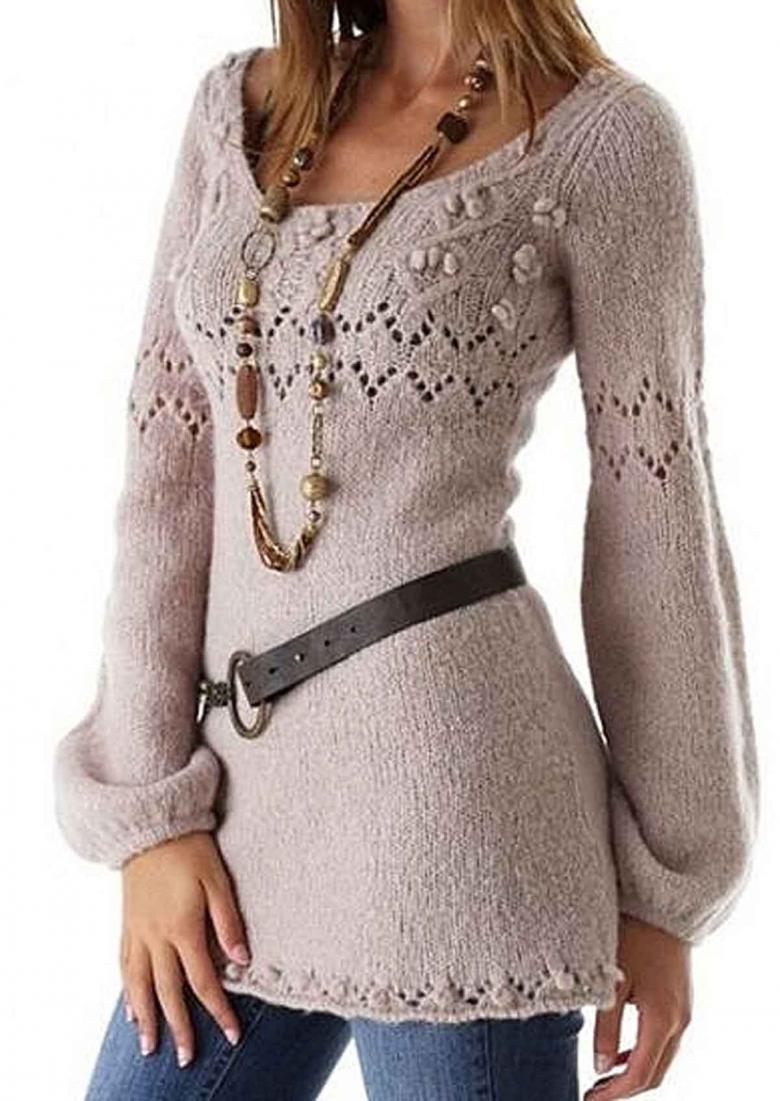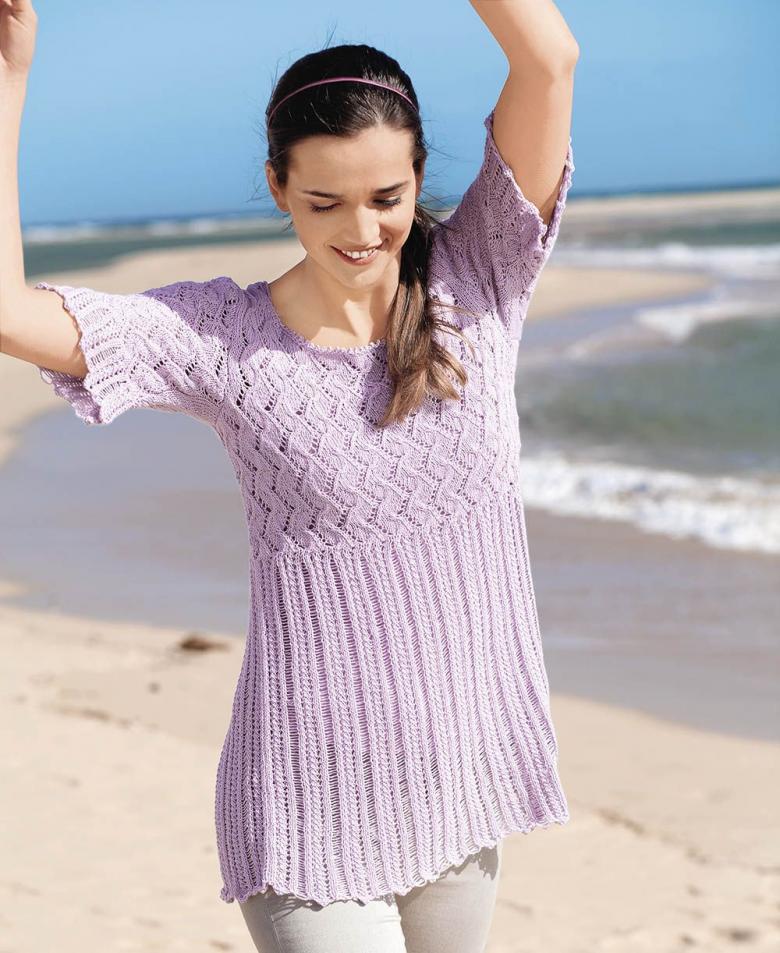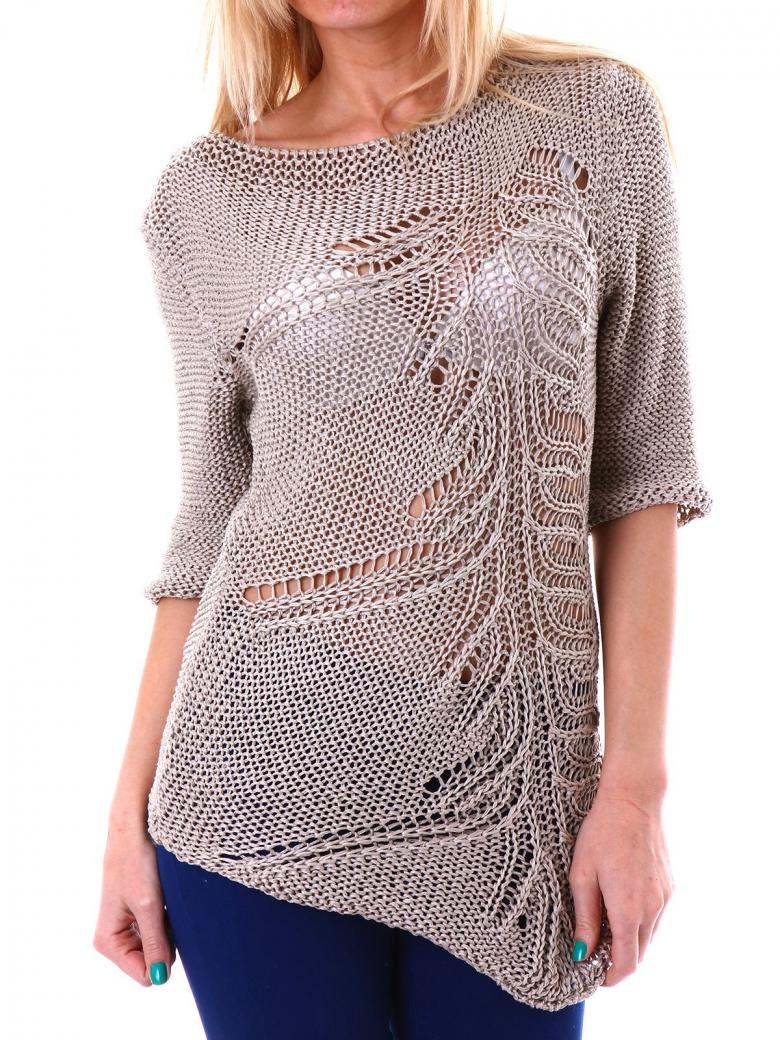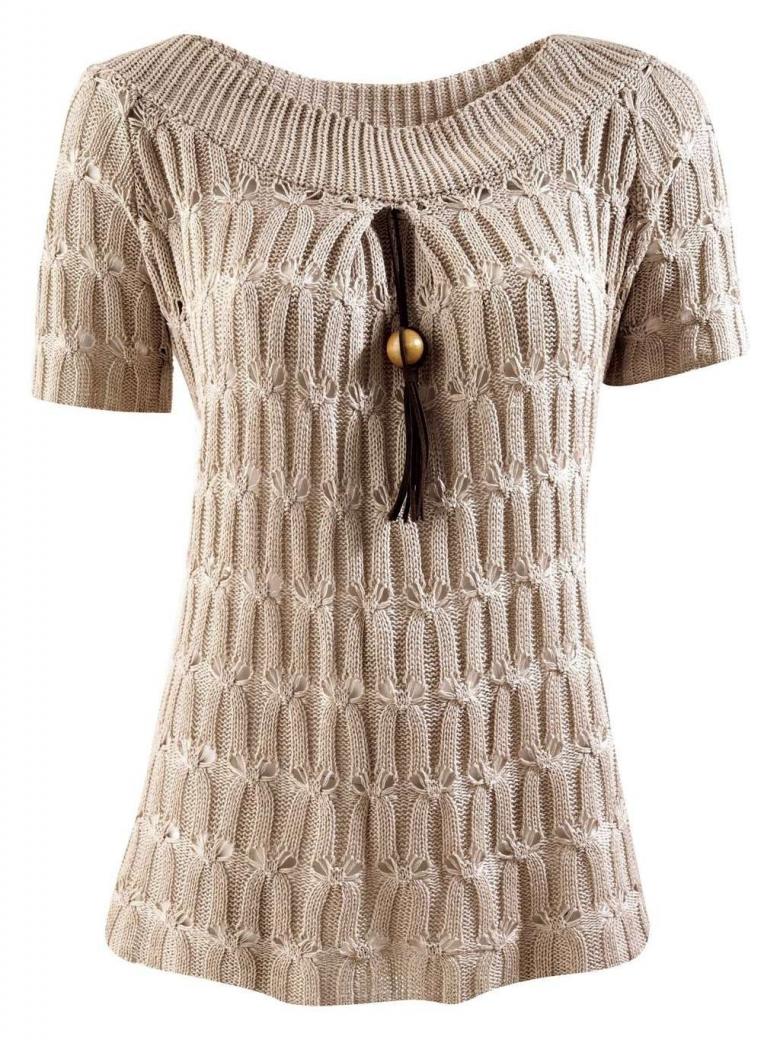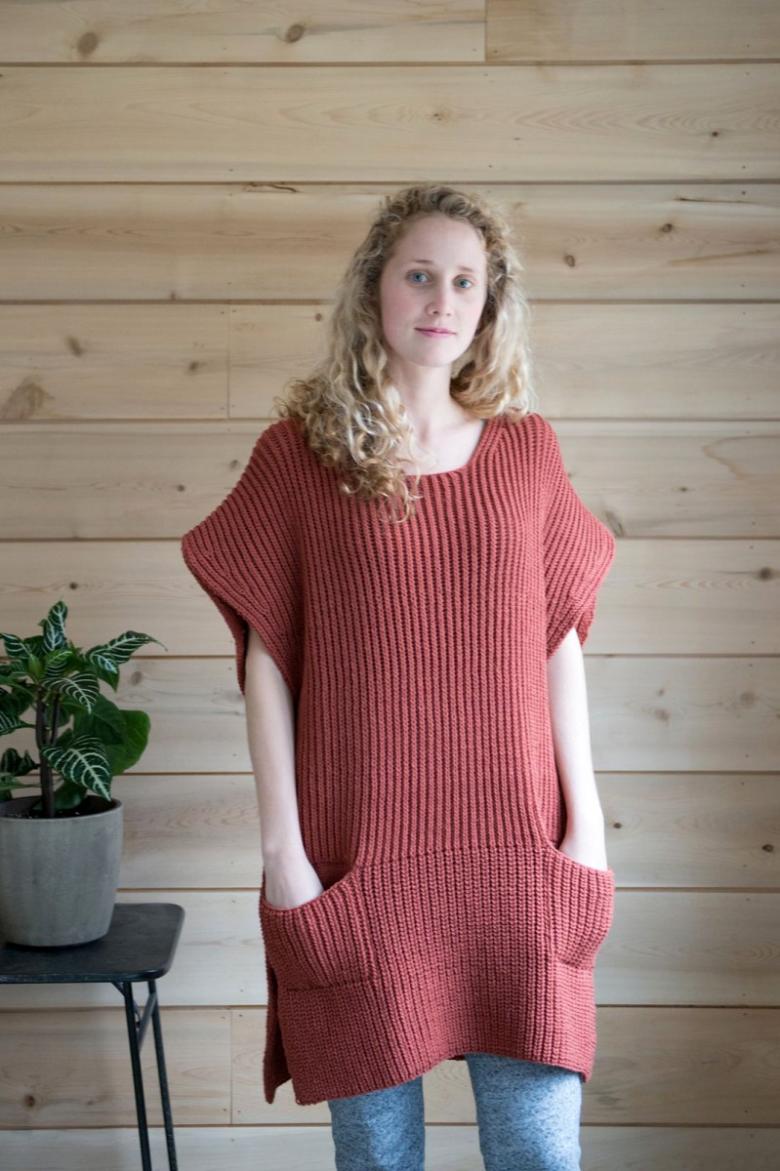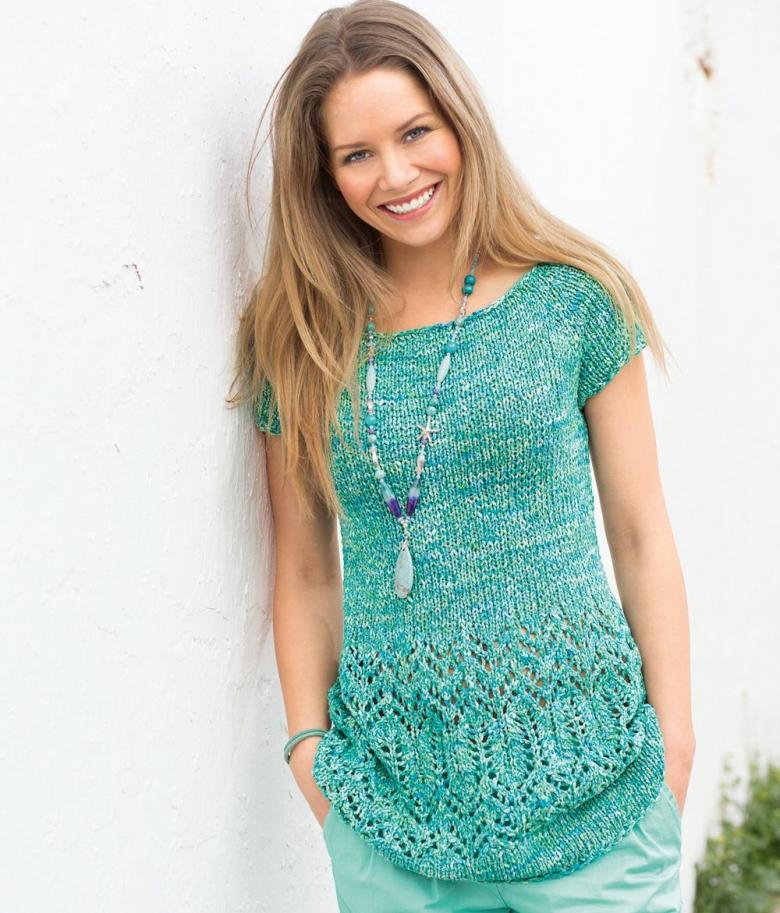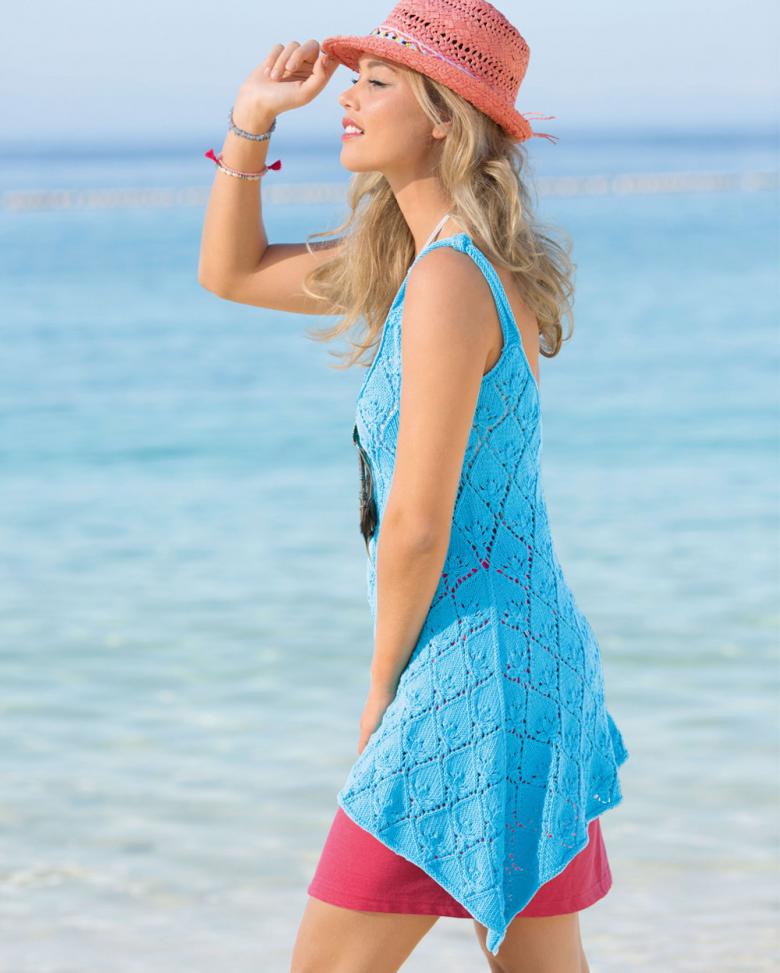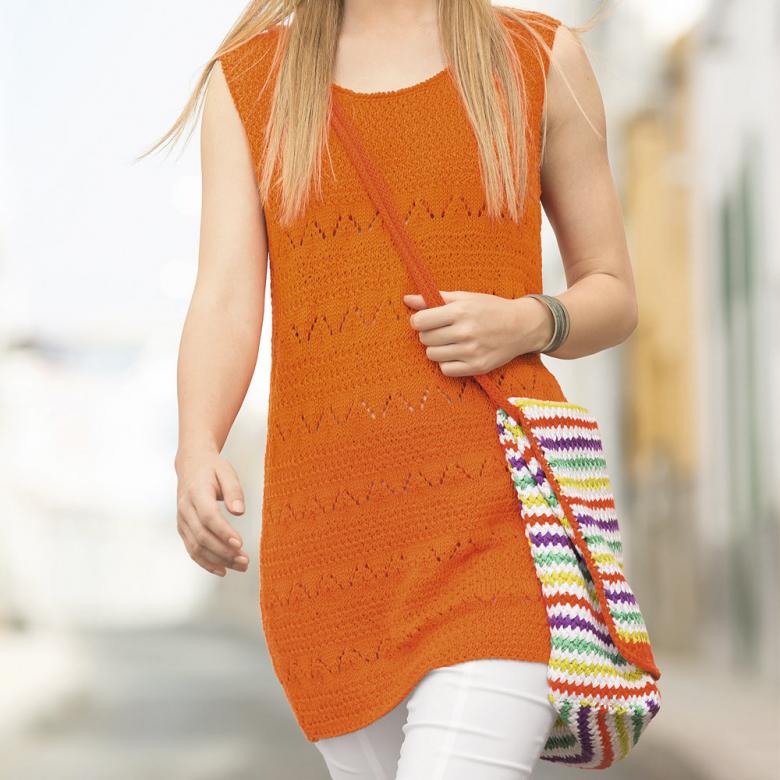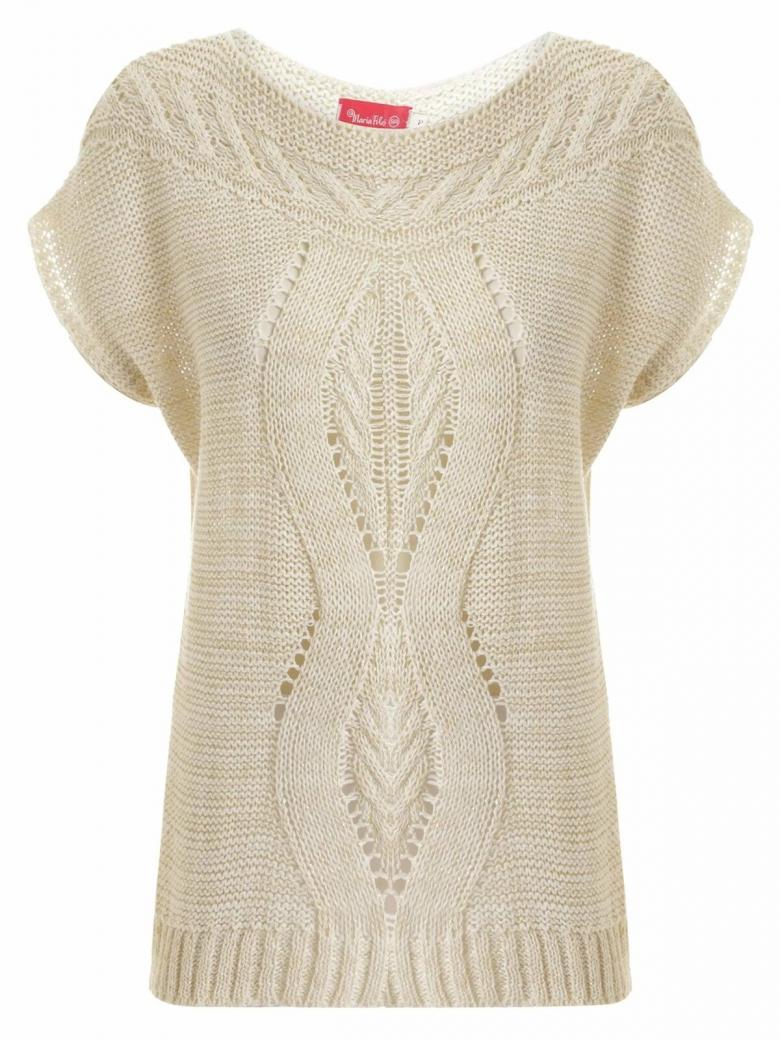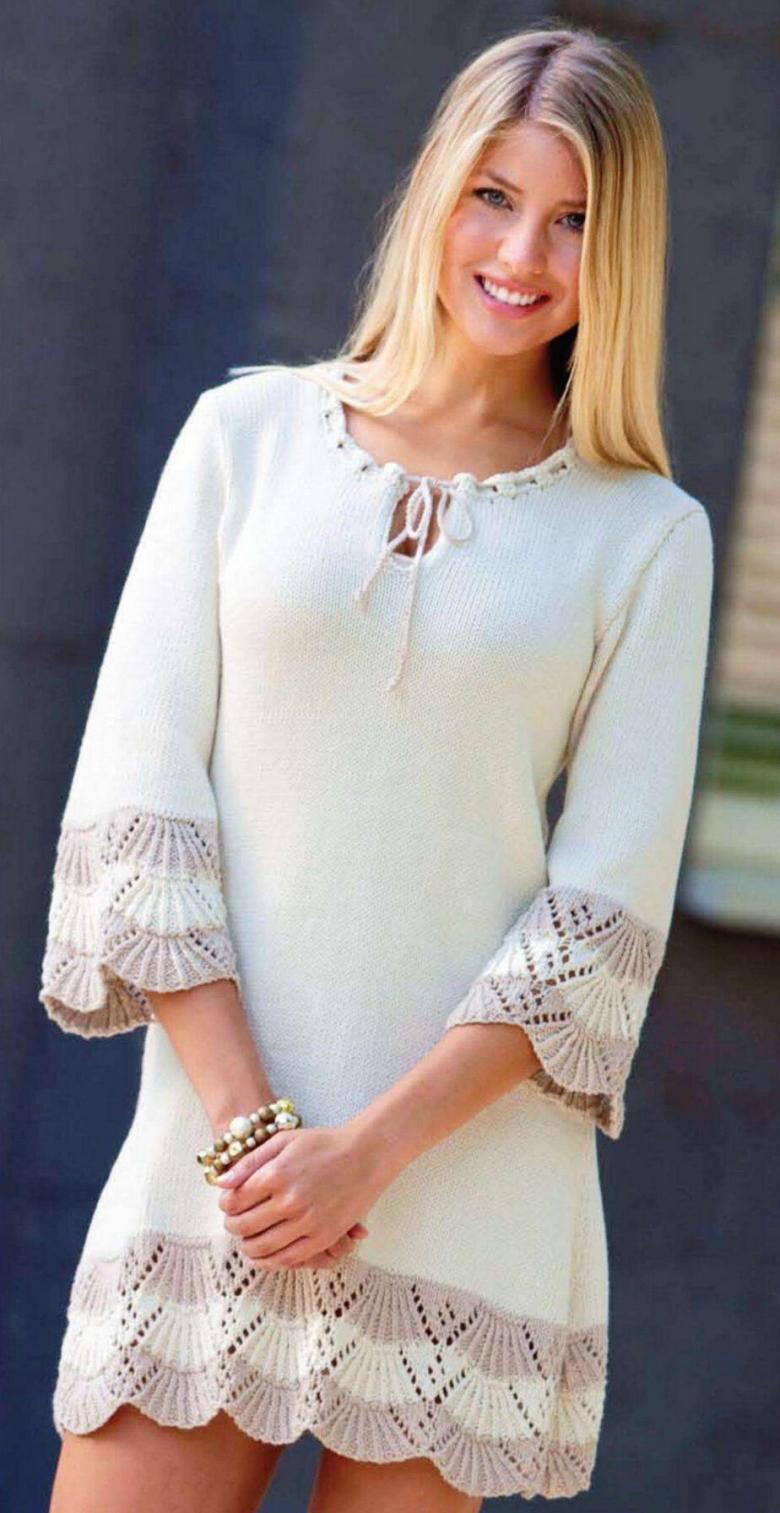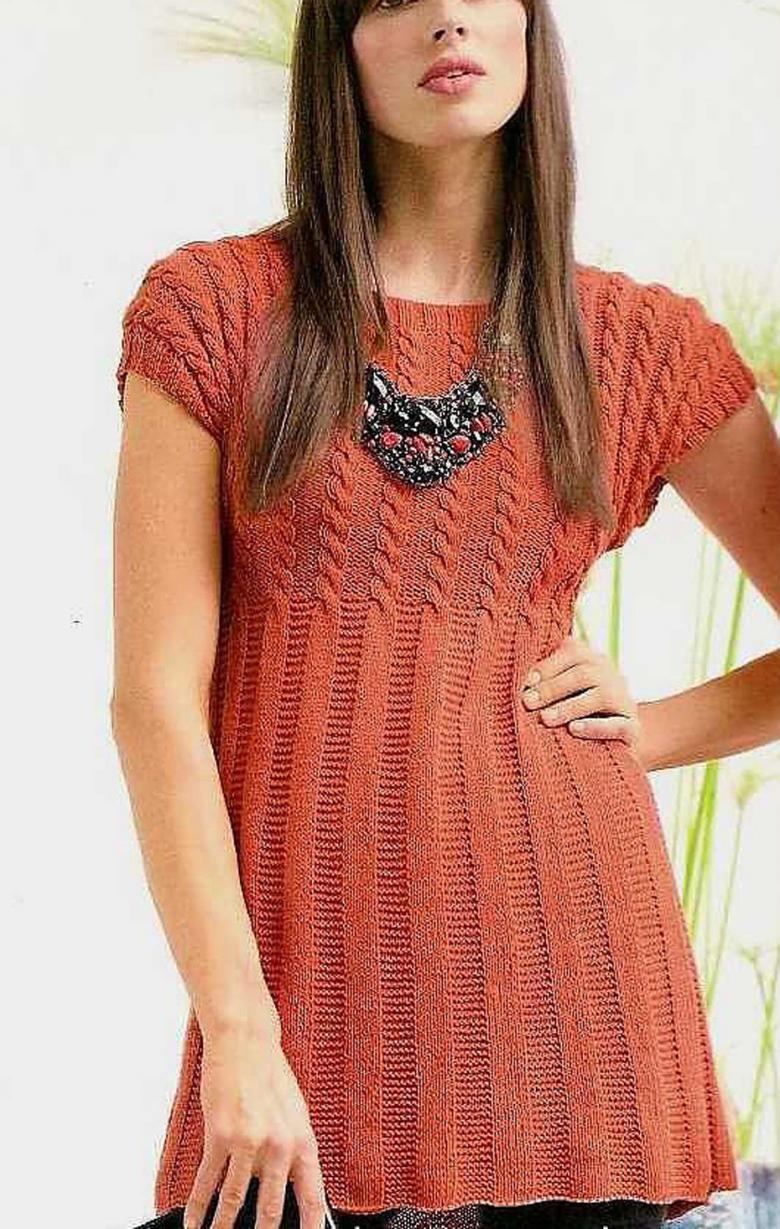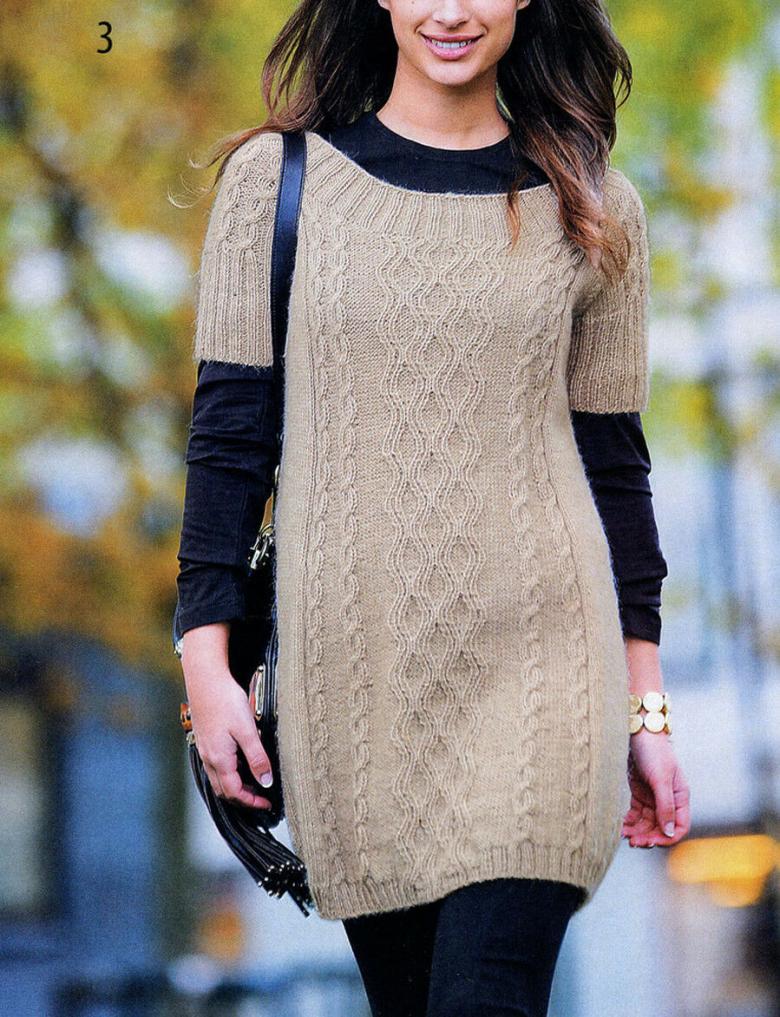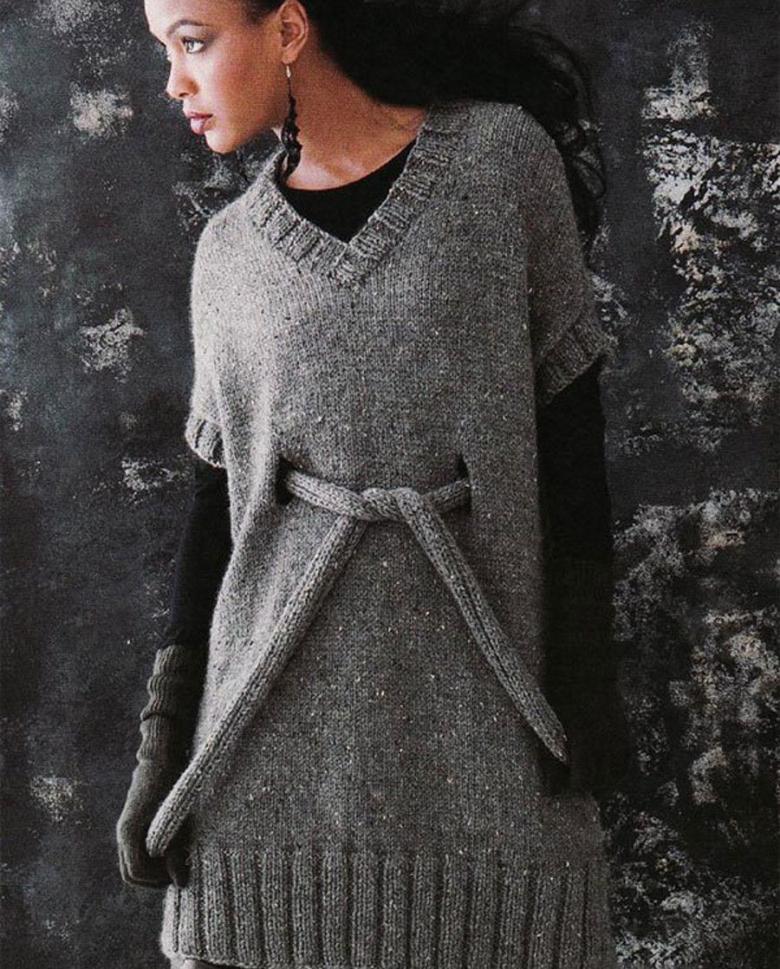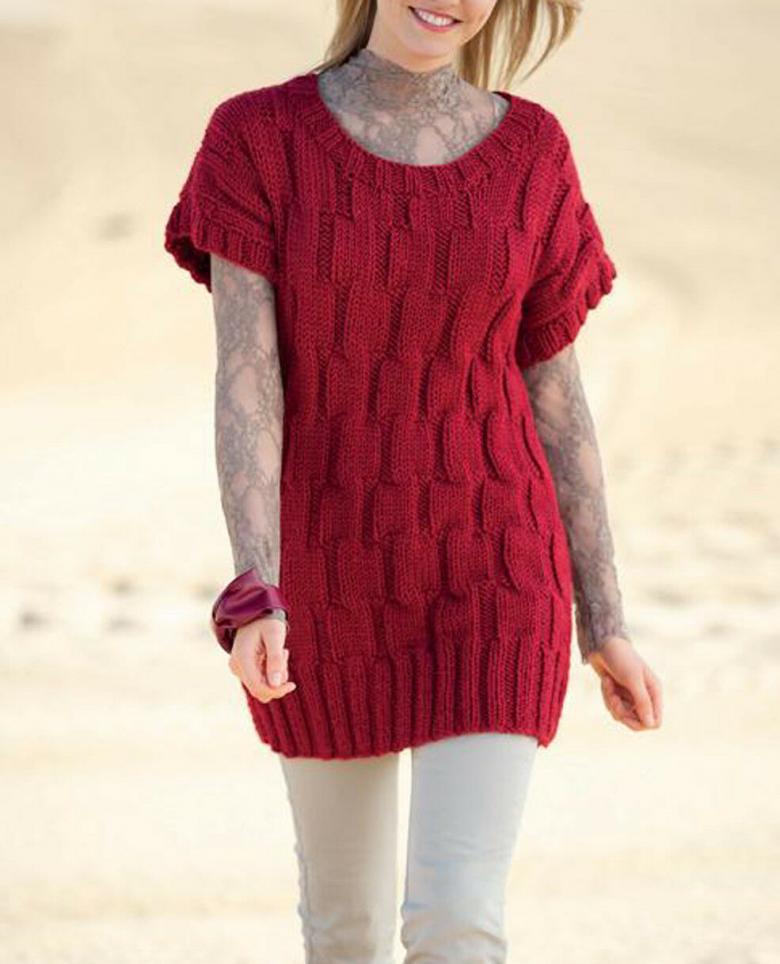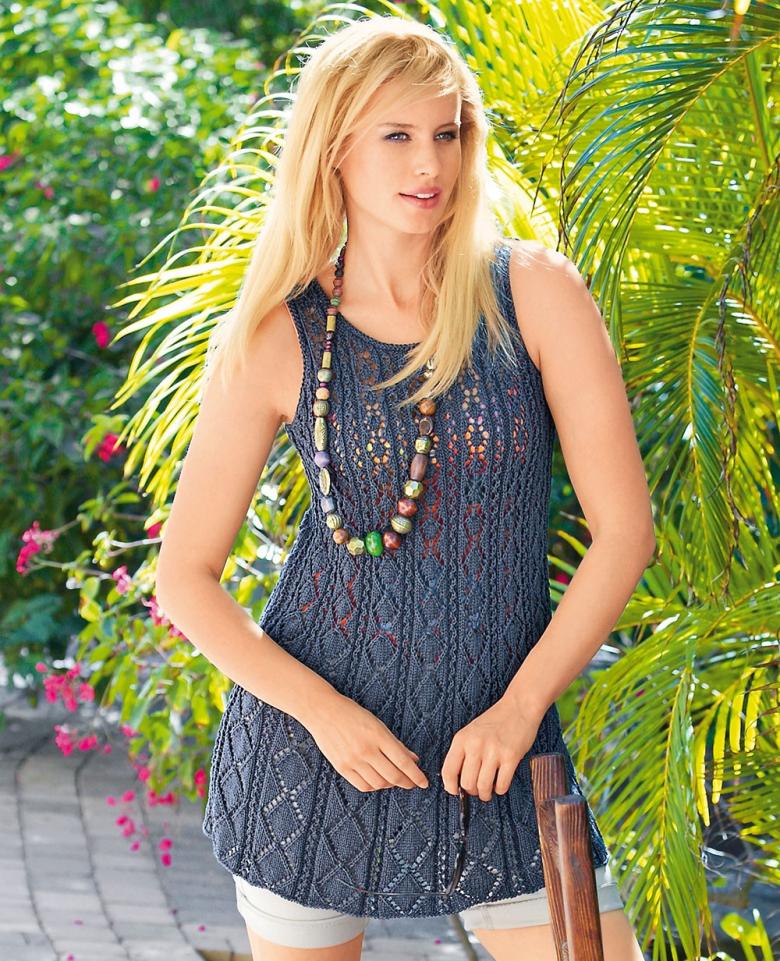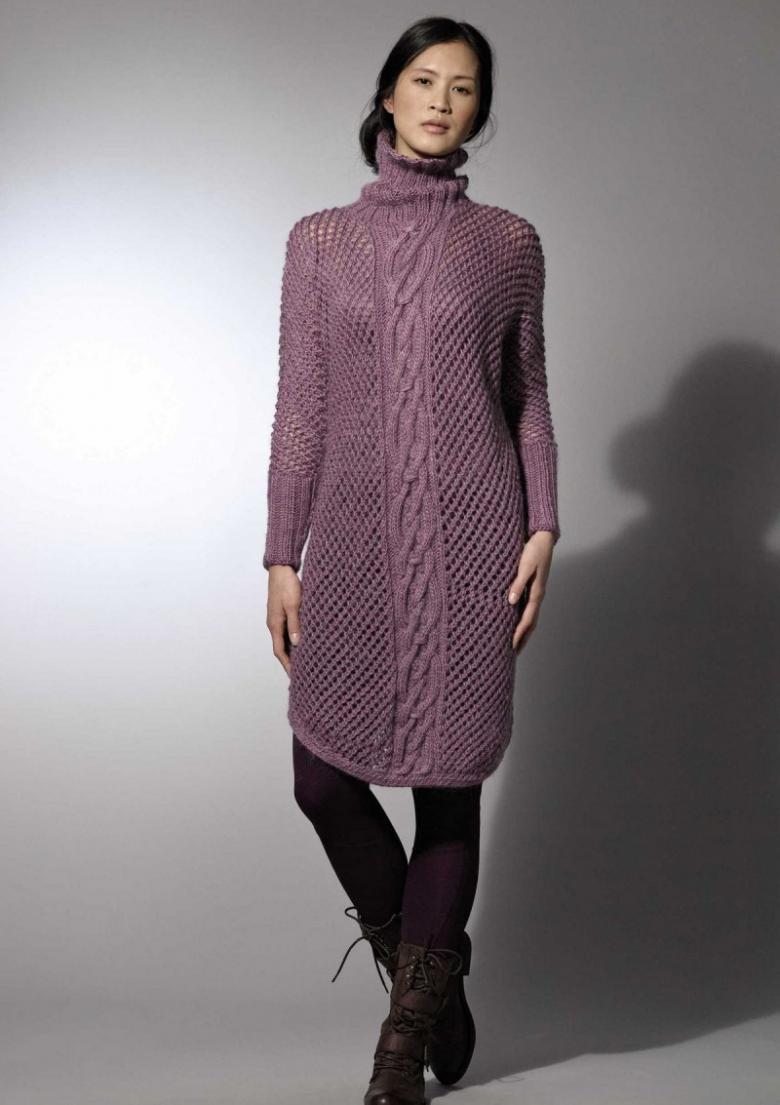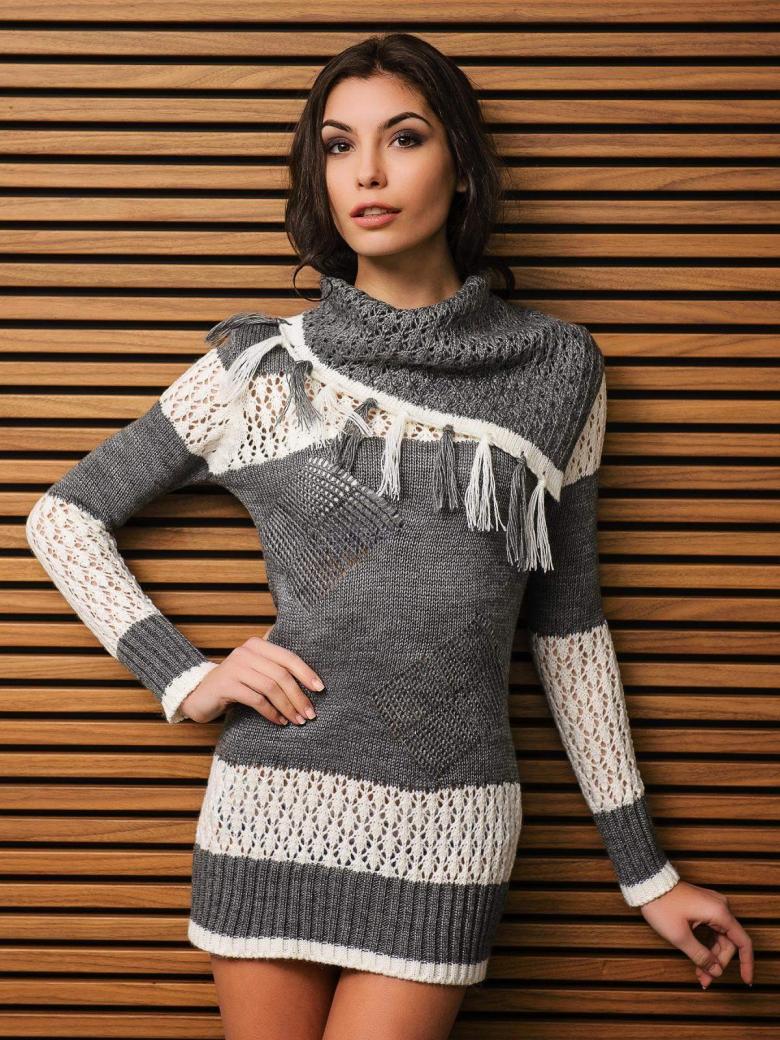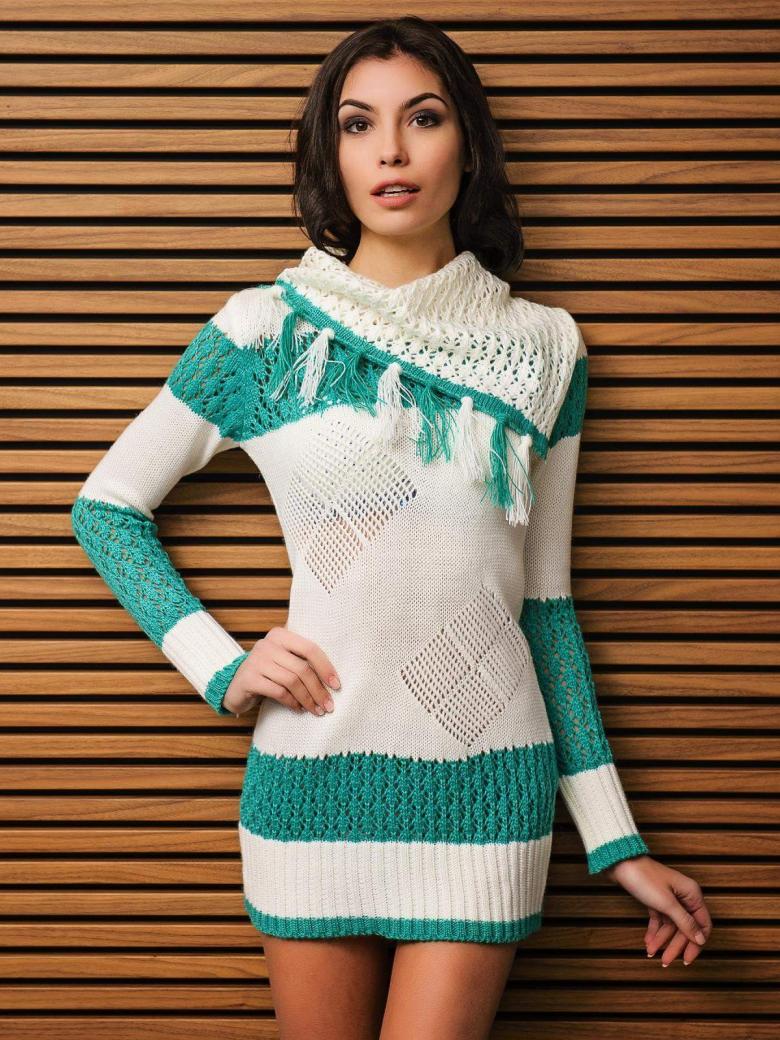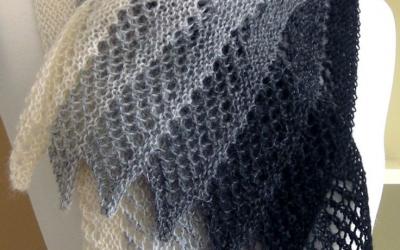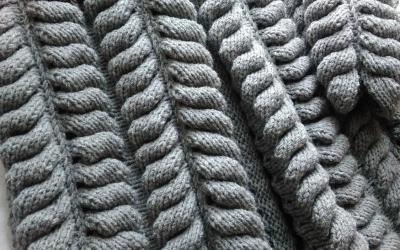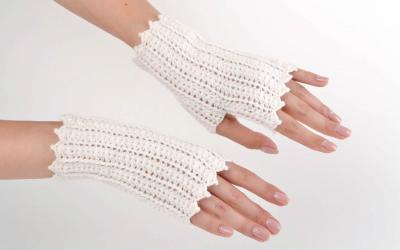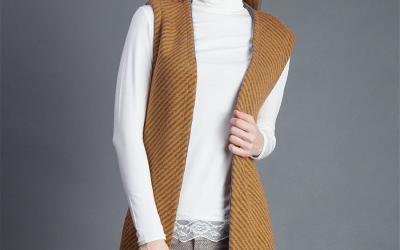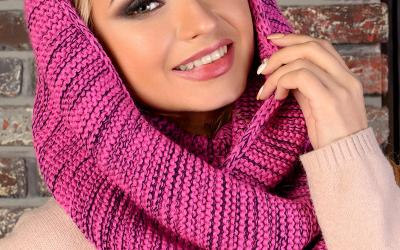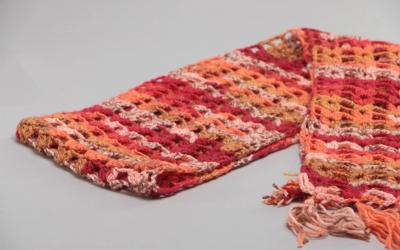How to knit a tunic by scissors and crochet - a detailed description with photo examples
Tunic is a garment that came into the modern closet from ancient Rome and Greece. But its transformation, despite the past centuries, is quite minimal. The only thing is that the materials used now for this type of clothing are very diverse.
Knitted Tunic Patterns and Yarn Used
Considering the totality of the connected women's tunic models, it is possible to classify depending on the technology of execution into:
- Crocheted.
- Made with the help of needles.
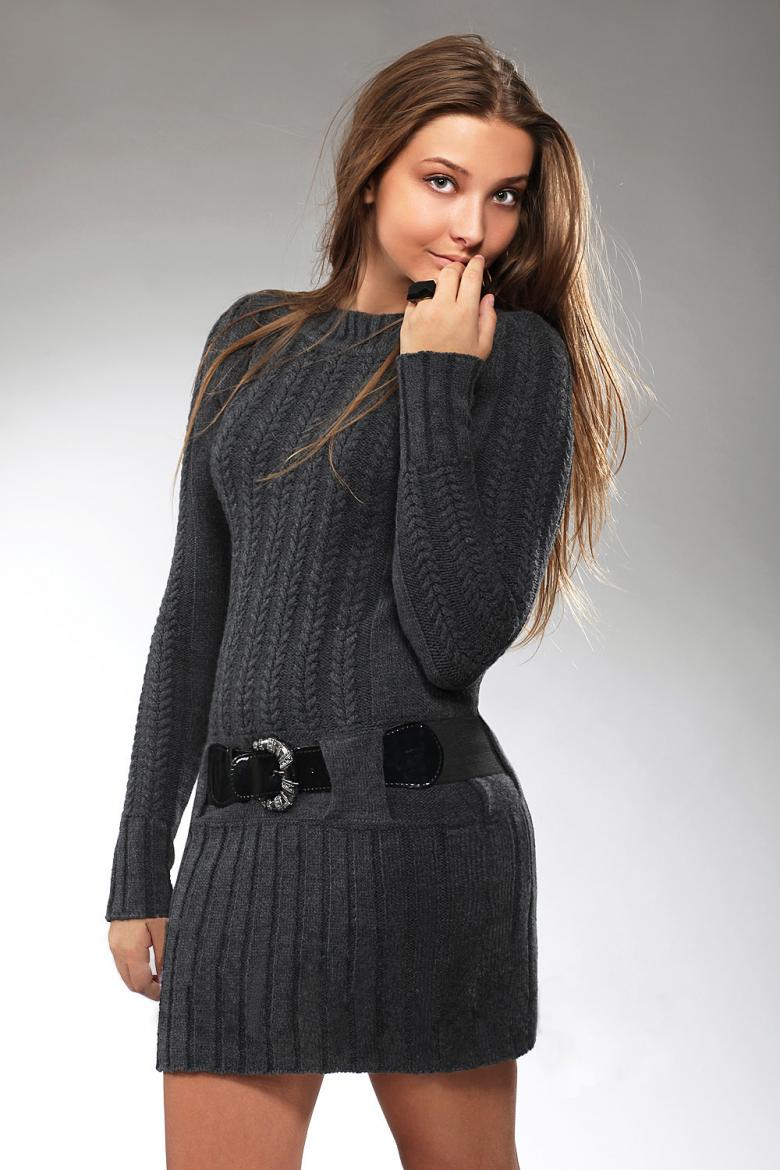
Speaking of texture:
- Smooth.
- Openwork - have a knitted pattern with holes through.
- With a pattern that resembles a bas-relief. These are all sorts of braids, bobbins and other types of convex patterns.

According to the color scheme tunic model can be:
- Monochrome.
- Have a combination of colors that form a certain conceived pattern.
- Melange or tweed version.
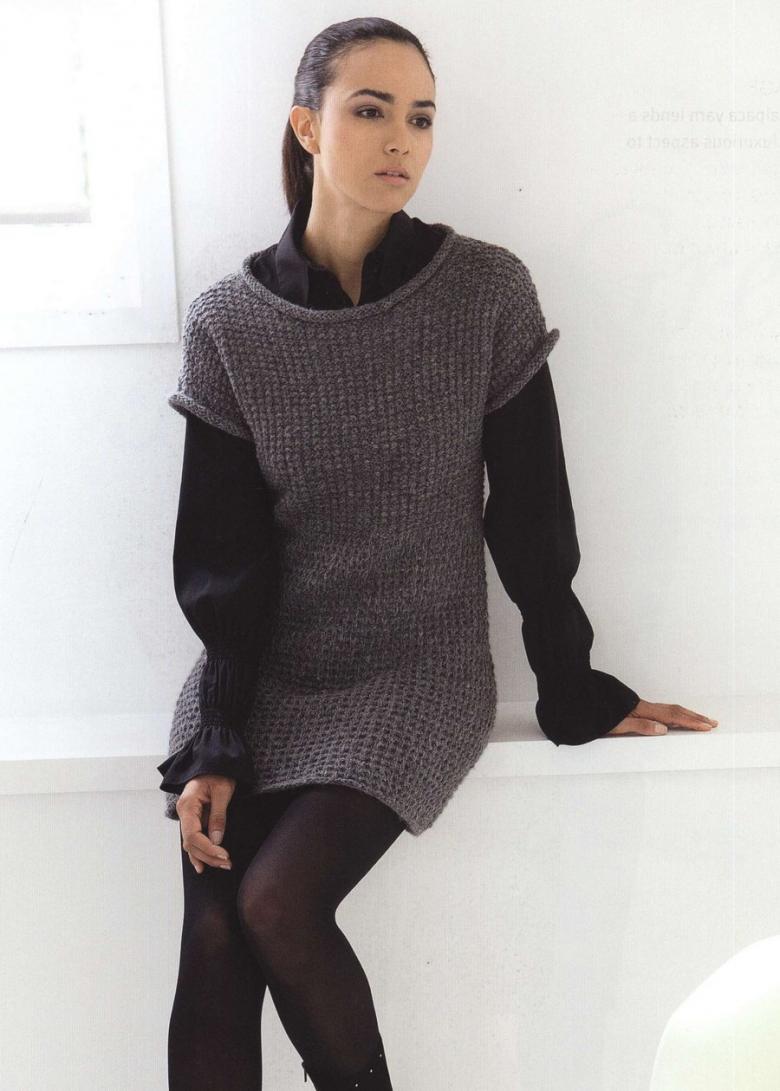
According to the season of wear::
- Summer.
- Winter.
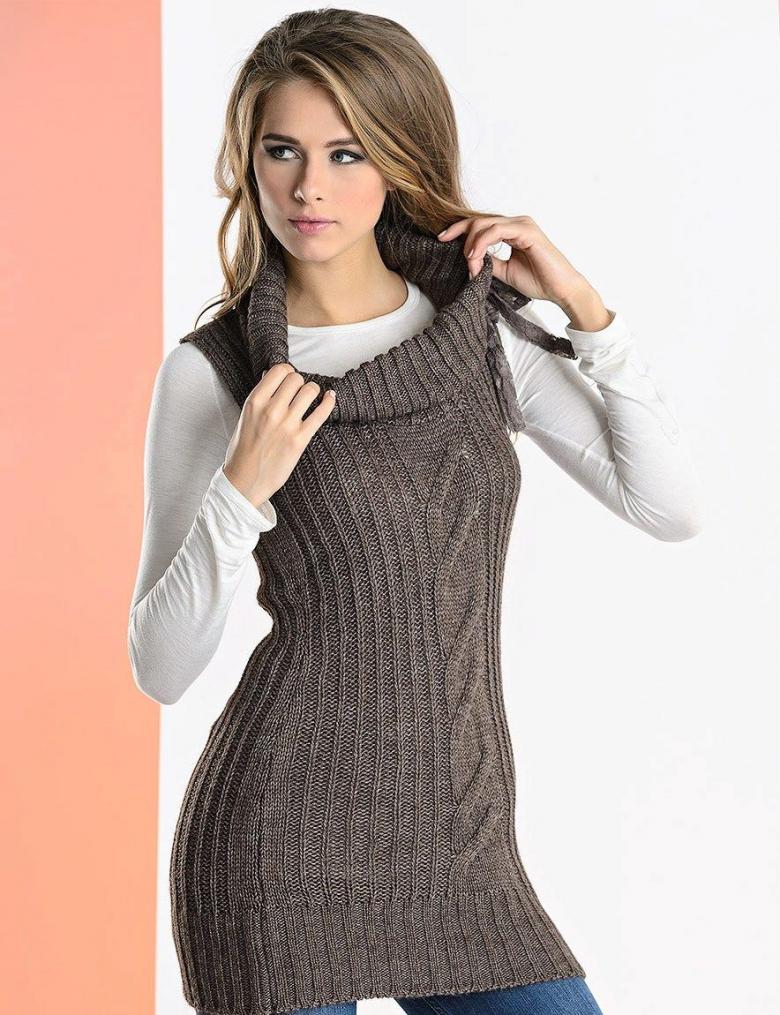
By style:
- Straight.
- Flared.
- Flared.
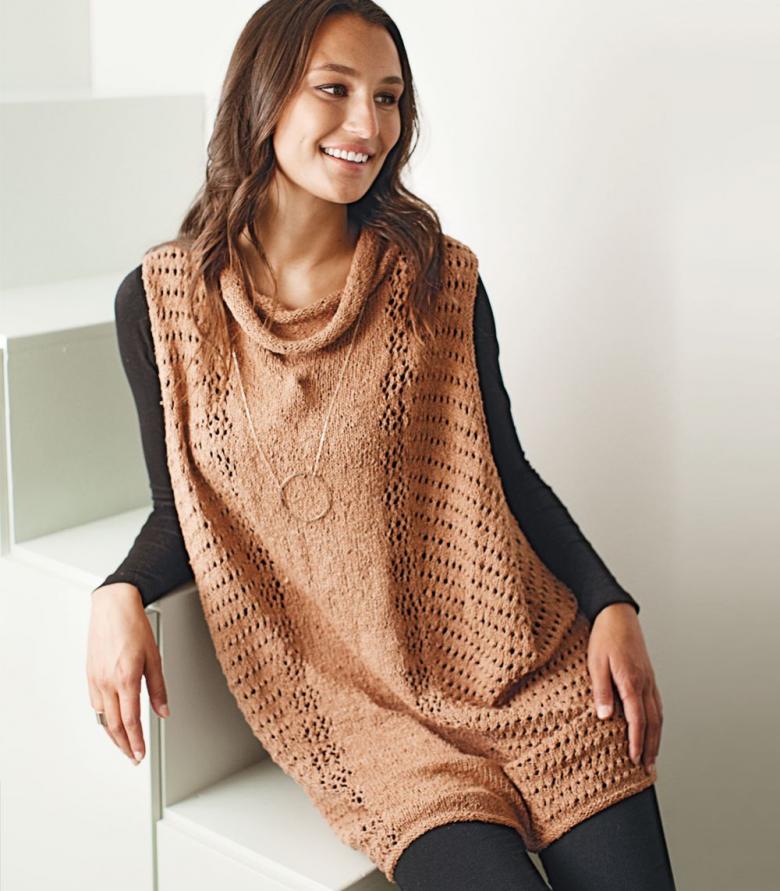
It is necessary to choose the right yarn. It must be suitable for a certain season. It is necessary to take into account its likelihood of stretching. A product that sits well after knitting, may stretch during use. And if washed at the wrong temperature regime, on the contrary, it can shrink sharply. These factors must be taken into account before buying a particular type of yarn.
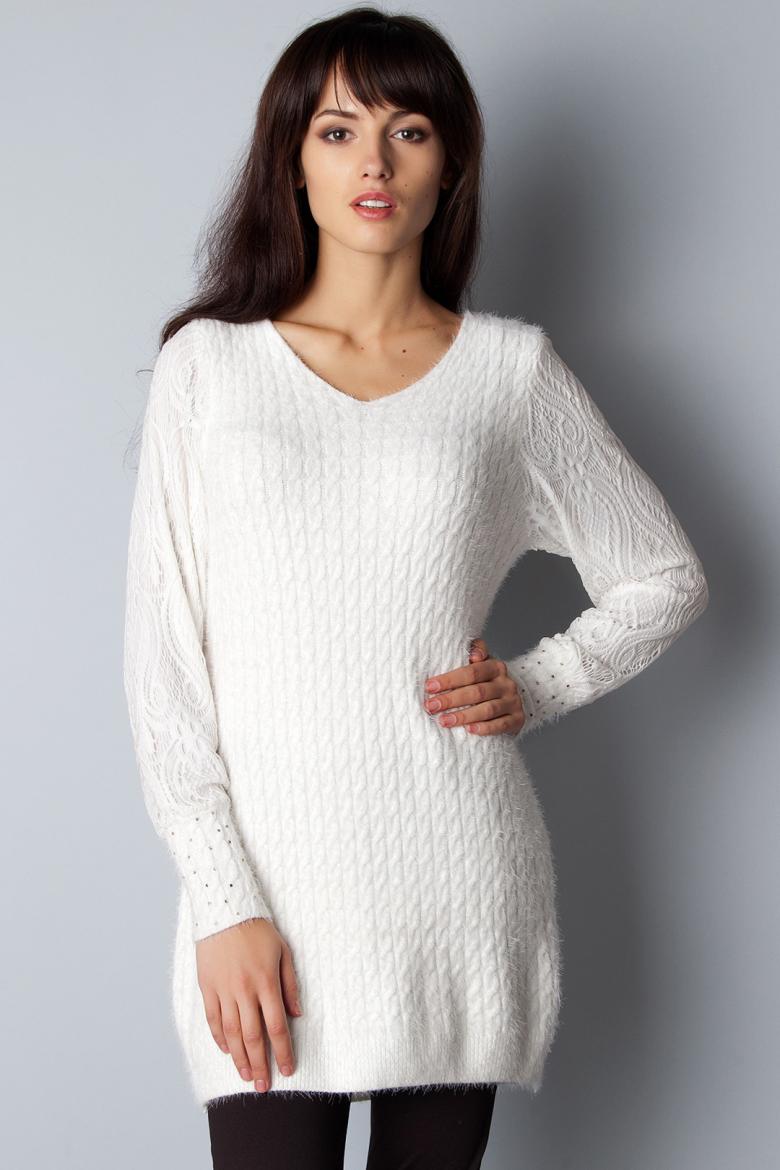
When the yarn is chosen, you need to buy the appropriate diameter needles. In order not to miss the mark, it is advisable to buy not one tool, but several at once.
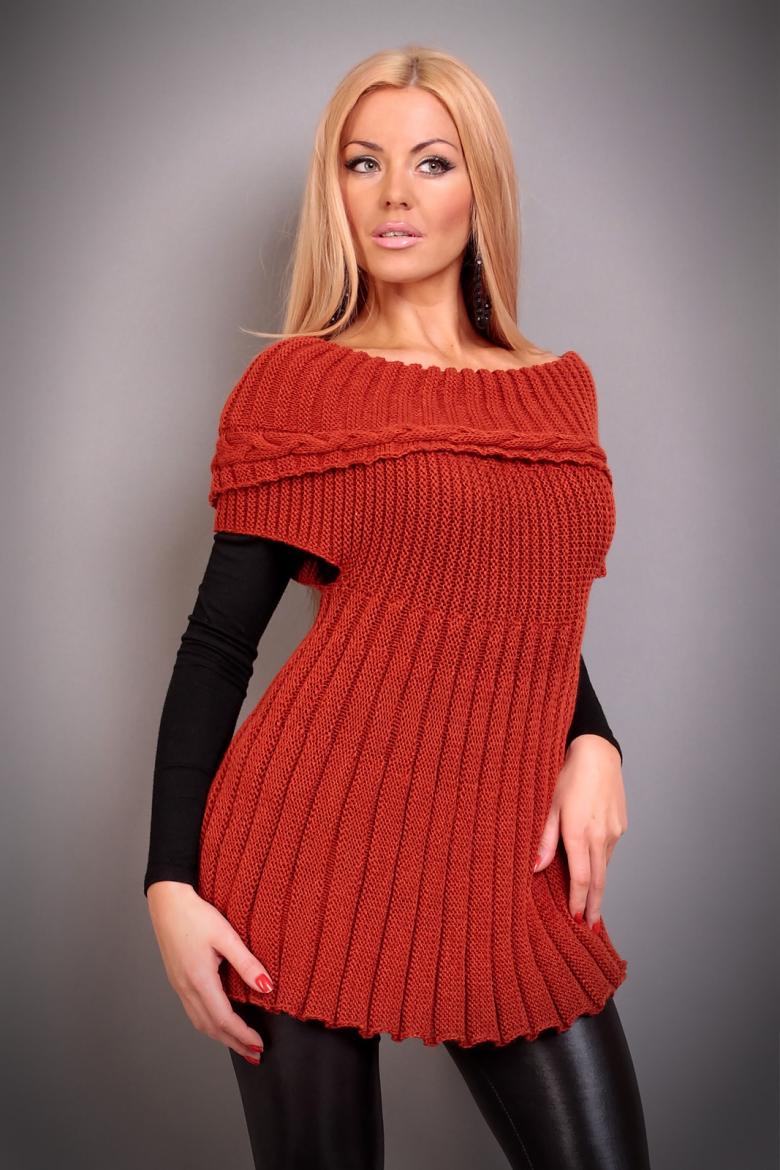
How to knit a tunic - a detailed action plan
Getting to work on the tunic must perform preliminary actions. Measure your own figure. It is necessary with the help of a flexible meter to take readings:
- Chest circumference.
- The circumference of the waist.
- The girth at the hips.
- Sleeve length from the top of the shoulder - for models with sleeves.
- The length of the product you want to get.
- After taking measurements, pick up a scheme tunic dress.
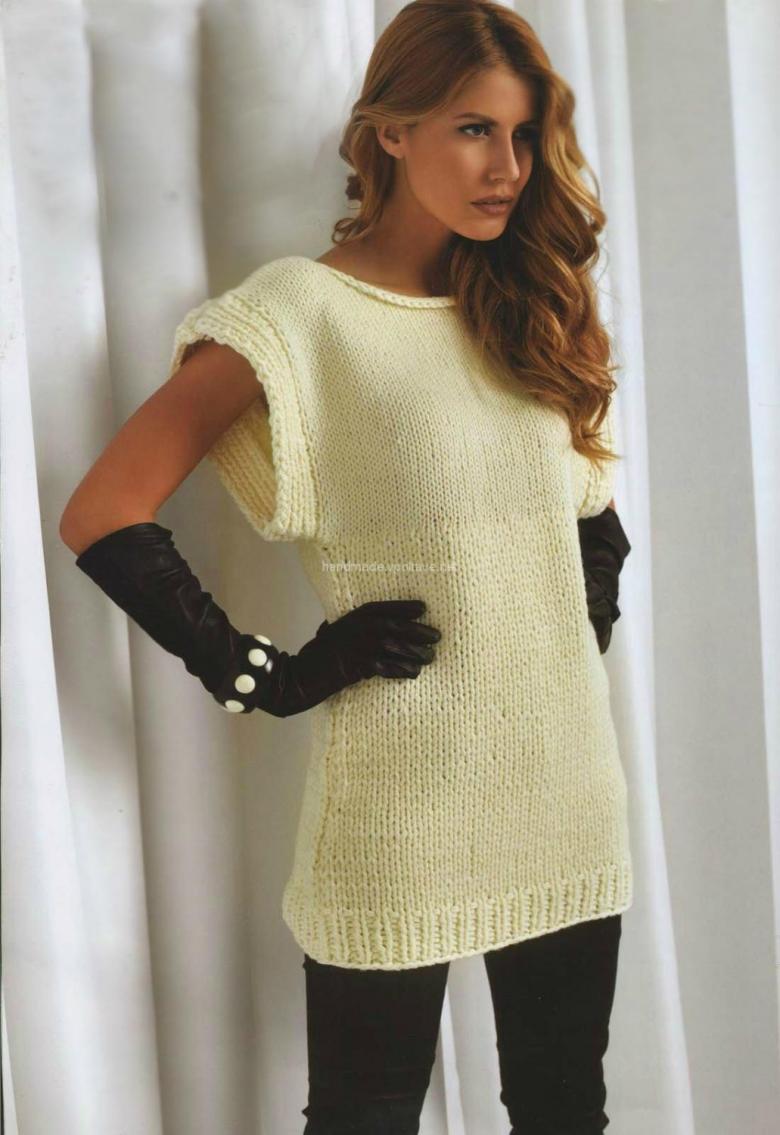
Scheme for knitting a simple tunic with scissors
Wanting to knit an original monochrome women's model that will look perfect with jeans, you can opt for the below scheme.
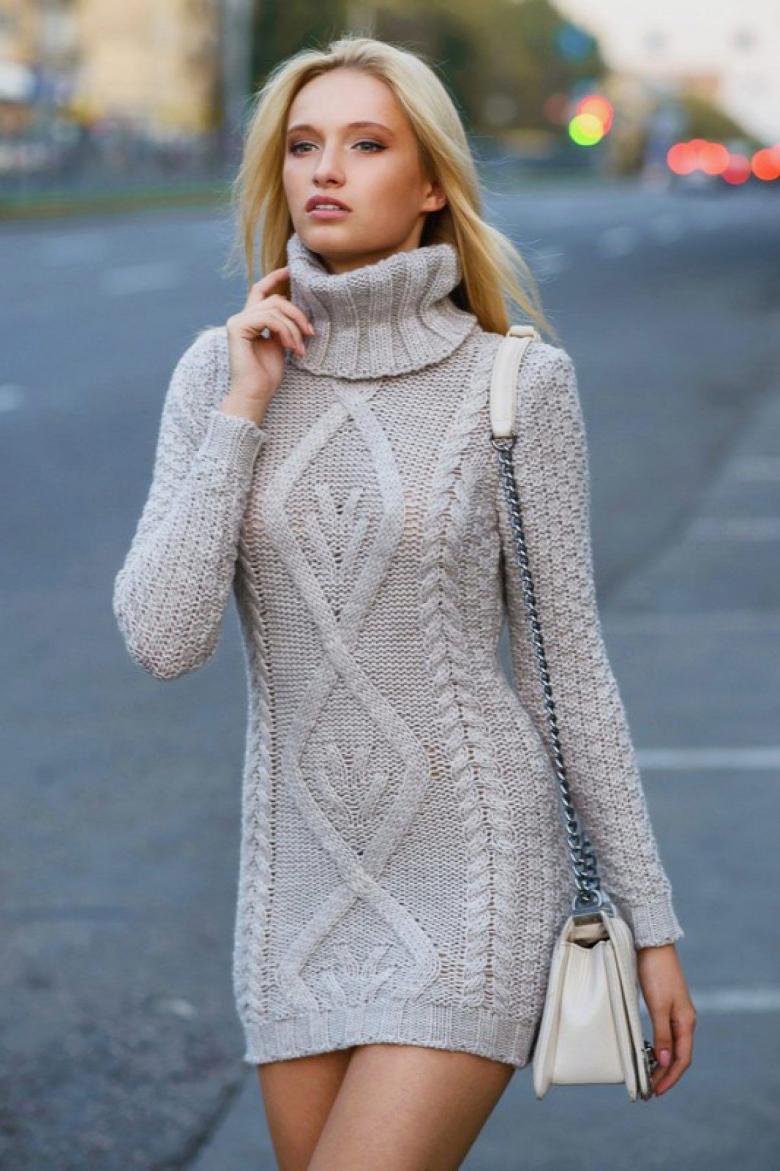
You will need approximately 500-550 grams of yarn for size 42 to 48. It is advisable to choose pure cotton with a thickness of yarn corresponding to the parameters of 75 m in 50 grams. Straight needles from number 6 to number 8 would be ideal, depending on the knitting density of the knitter.
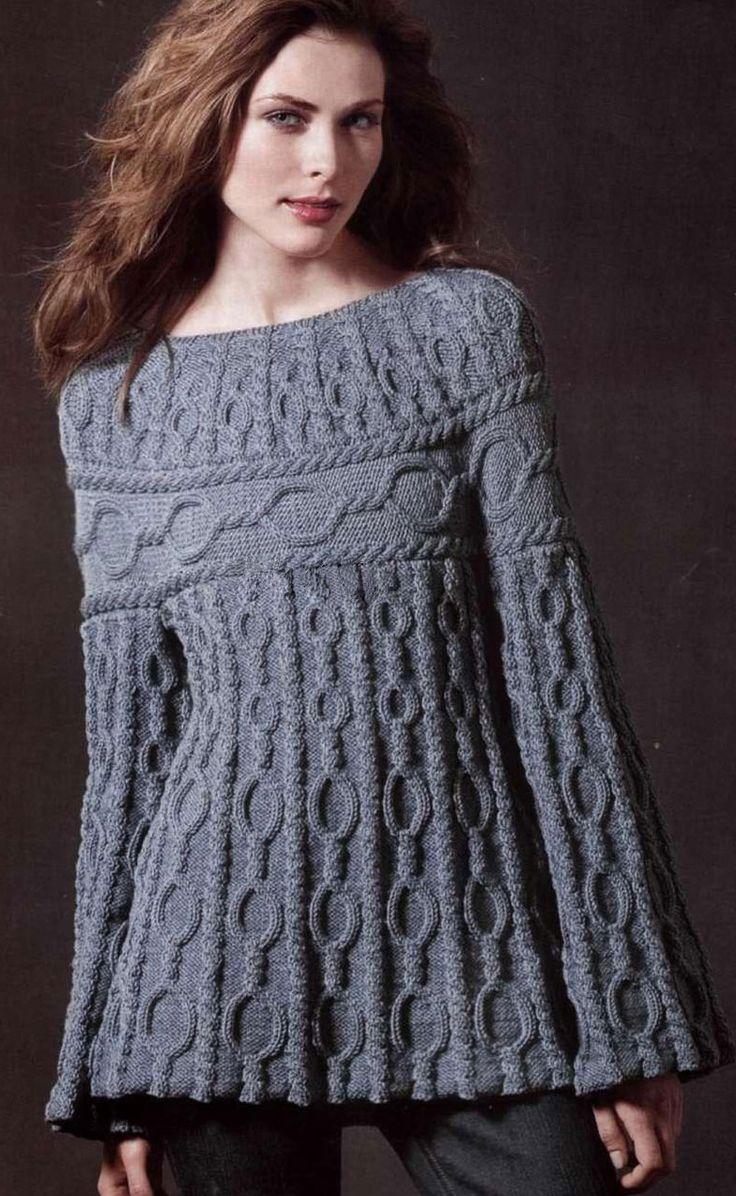
The pattern is simple, requiring only the ability to knit the front and back stitches.
The knitting density should form the following size - 17 rows of 15 stitches. The knitted sample should be 10 cm by 10 cm.
It is necessary to knit according to the scheme, which is shown in the figure below.
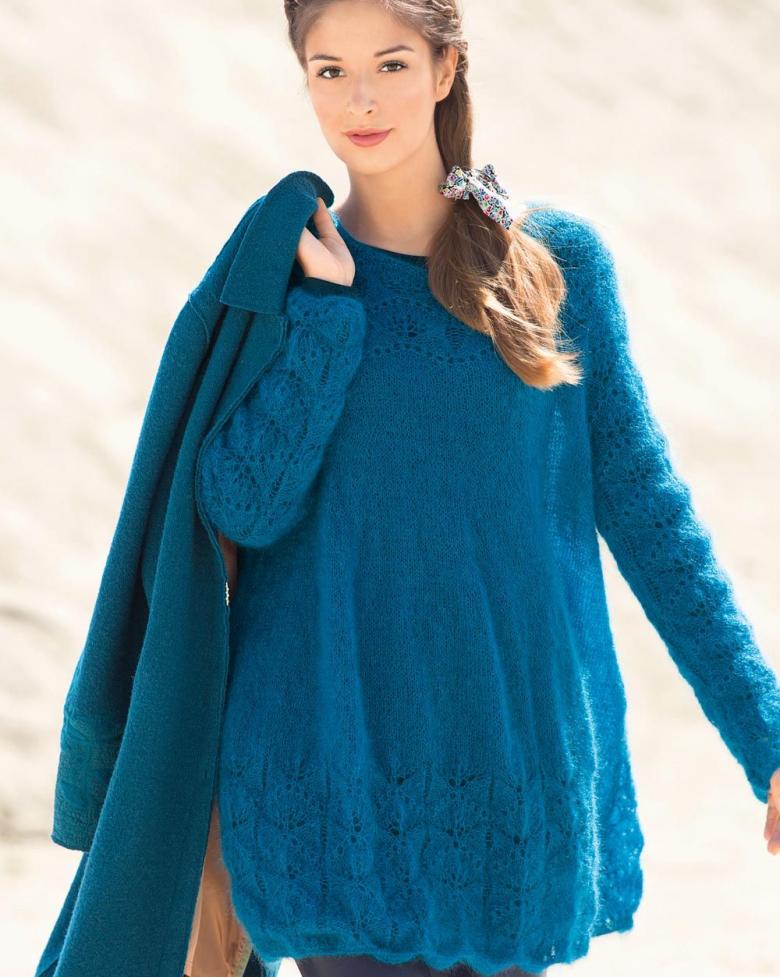
When the pieces are knitted, you need to wash the elements. It is obligatory to dry unfolded on a light colored towel. Do not hang on a rope - this will lead to stretching and deformation of parts.
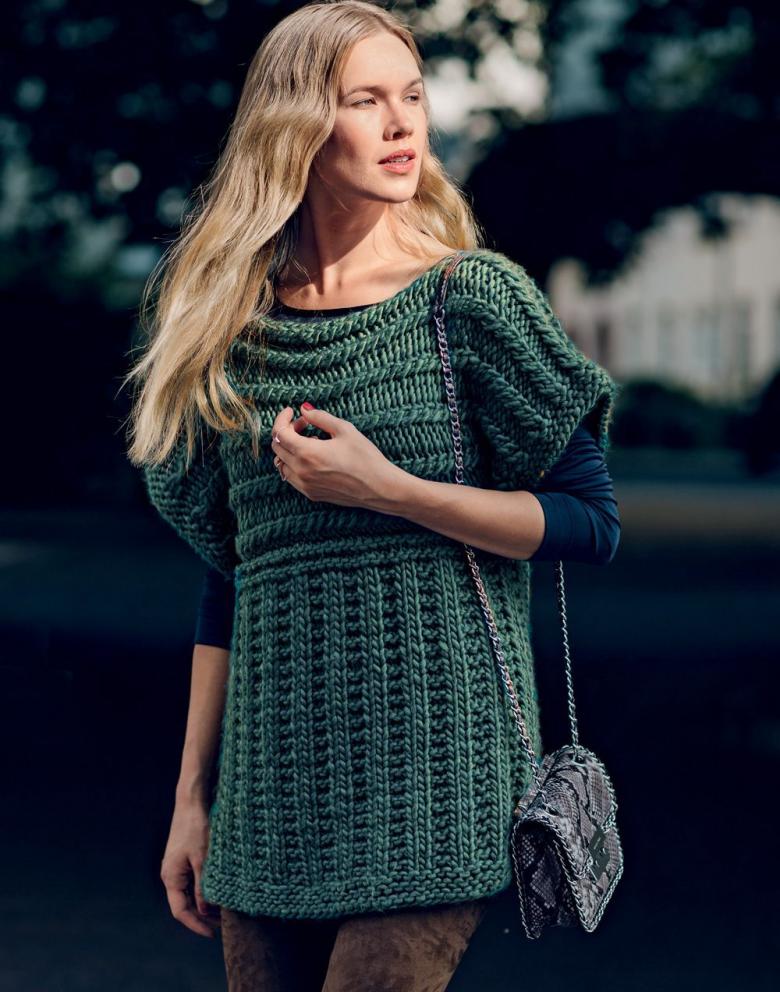
After it is completely dry, you must first sweep to arrange the pieces correctly, and they lay without forming unnecessary squeezes.
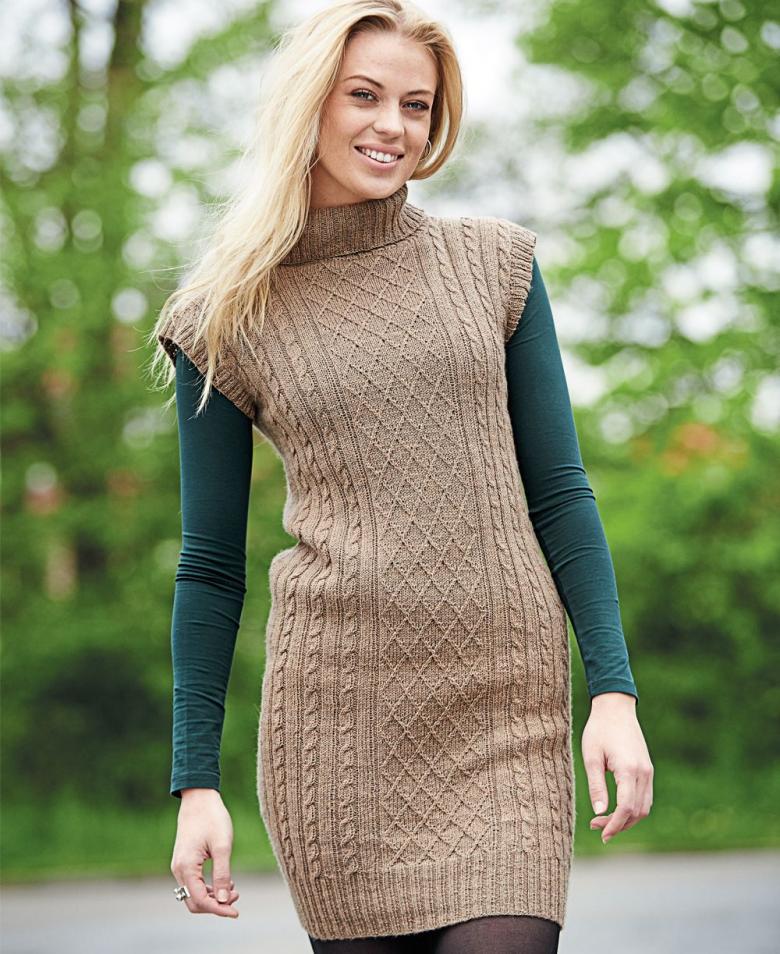
Openwork summer tunic for experienced knitters
For this beautiful and original product you will need to take pure cotton or blended yarn approximately 320 g for size 42. You will need a needle size 5 and a crochet hook size 4.

First you need to knit a sample. It is necessary to dial 14 loops and knit 20 rows. Should get a square product with sides of 10 cm.
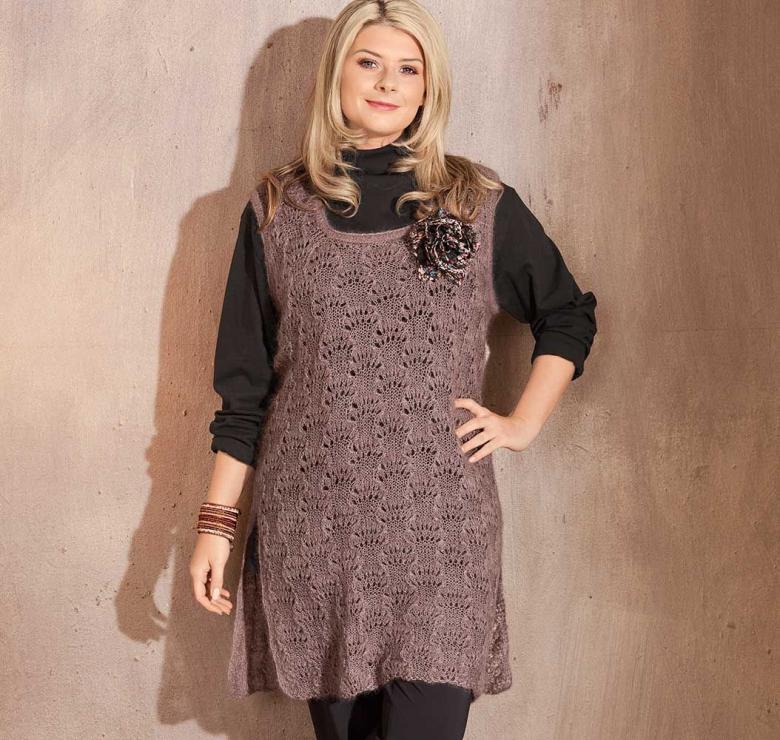
Next, according to the scheme need to knit a pattern of cones:
- Make a ring of the first row - 6 st. b / n.
- In the second row - 12 columns b / n.
- In the third and fourth row - 18 sts b / n each.
- In the fifth row - 12 sts b / n.
- In the sixth row - 6 sts b / n.
After that, the loops need to be tied and stapled. Everything else is knitted according to the scheme.
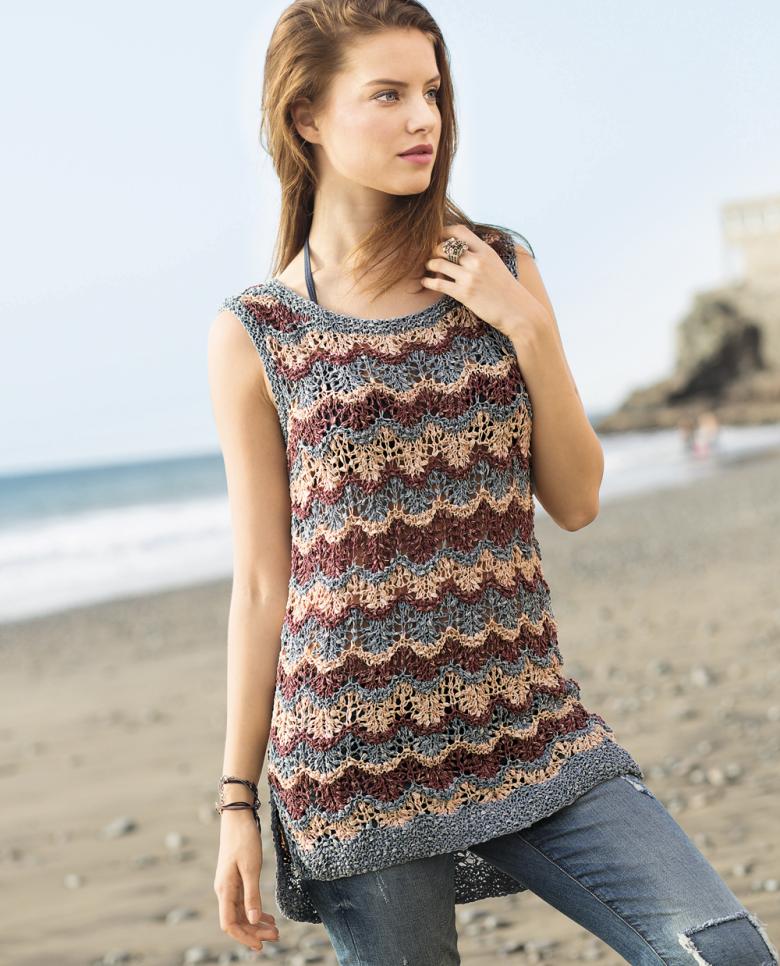
When the elements are tied, they can be dampened or washed and dried in an unfolded horizontal position. If the fabric is wrapped around the edge, you can poke it with needles with ears.
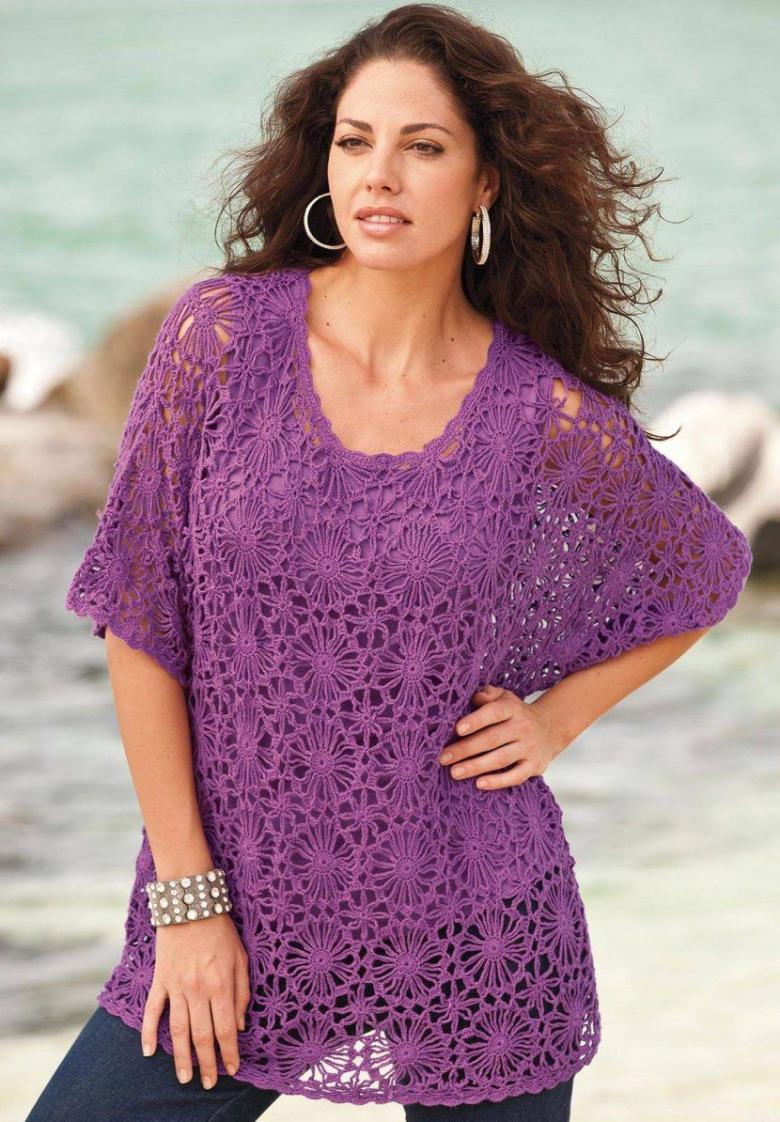
When all the elements are completely dry, you need to make the assembly. To do this, perform a needlepoint stitch on the sides and shoulder seams.
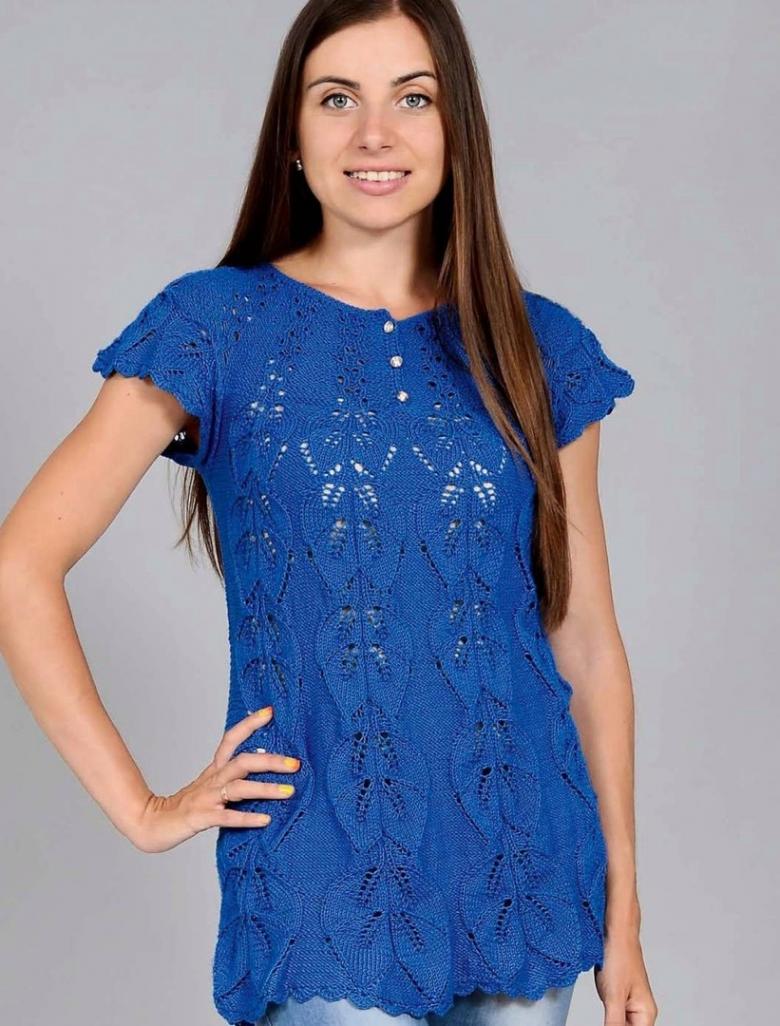
Then you need to knit laces. To do this, take hook number 4 and make two chains of air loops of length about 1 meter each. Do this tightly enough so that they are as coarse and hold their shape as possible, rather than sagging freely. Then you need to put them through the holes that are on the shoulders and tighten them. To the ends it is necessary to attach cones. The elements are knitted as outlined in the diagram above. And then attached to the ends of the lace.
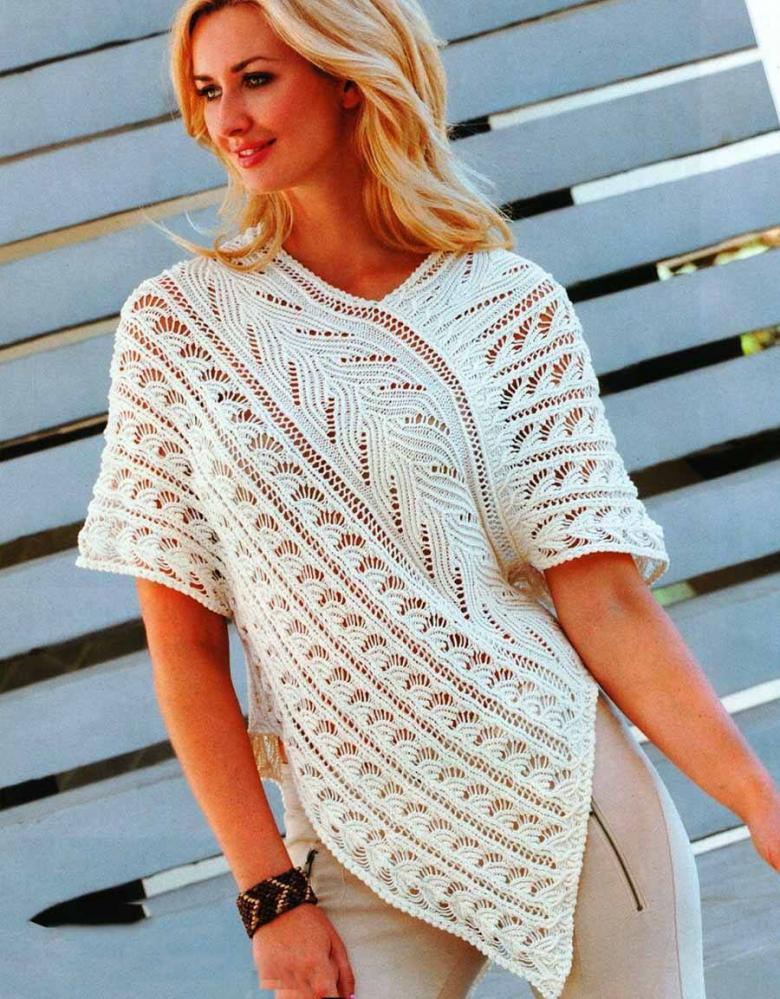
Summer elegant model
For this product, you will also need cotton yarn, which has 180 meters per 100 g. For such a thickness, you will need need needles #3 or #4. To understand what density of knitting should be adhered to, you need to dial on the needles 17 loops and knit 24 rows. In this case, the size of the resulting square is 10 cm by 10 cm.

The originality of this model is that it is knitted from sleeve to sleeve.
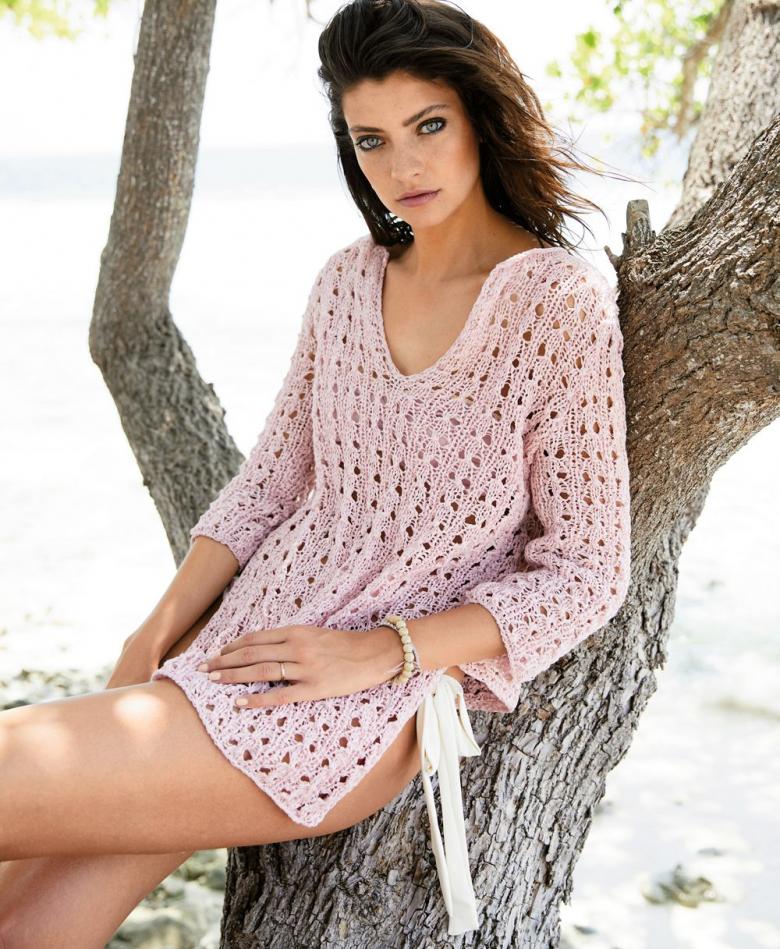
For size 38 you need to dial 40 loops on circular needles and start knitting in the main pattern. After knitting 16 cm in length, add about 83 stitches at a time on the left side. The number can be adjusted according to the individual size. Then knit the main pattern for about 43 cm. This will be just the width of the product on the front or back.
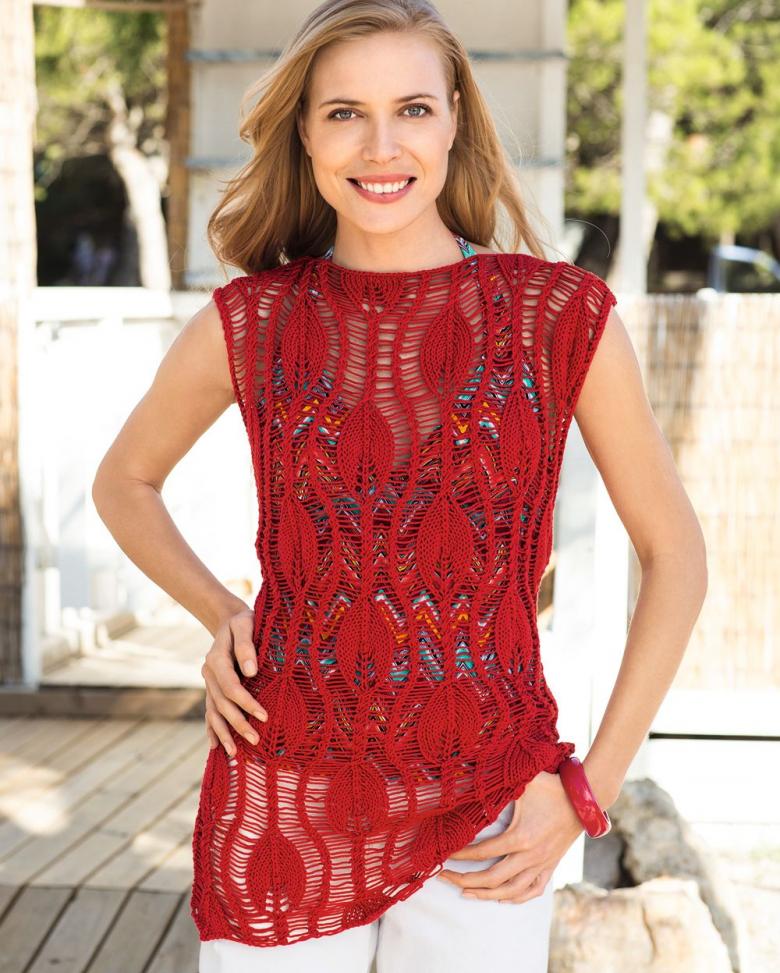
It is necessary to close the same number of loops that were dialed before. In this way reach the armhole of the opposite arm. Knit another 16 cm in height and close the loops.
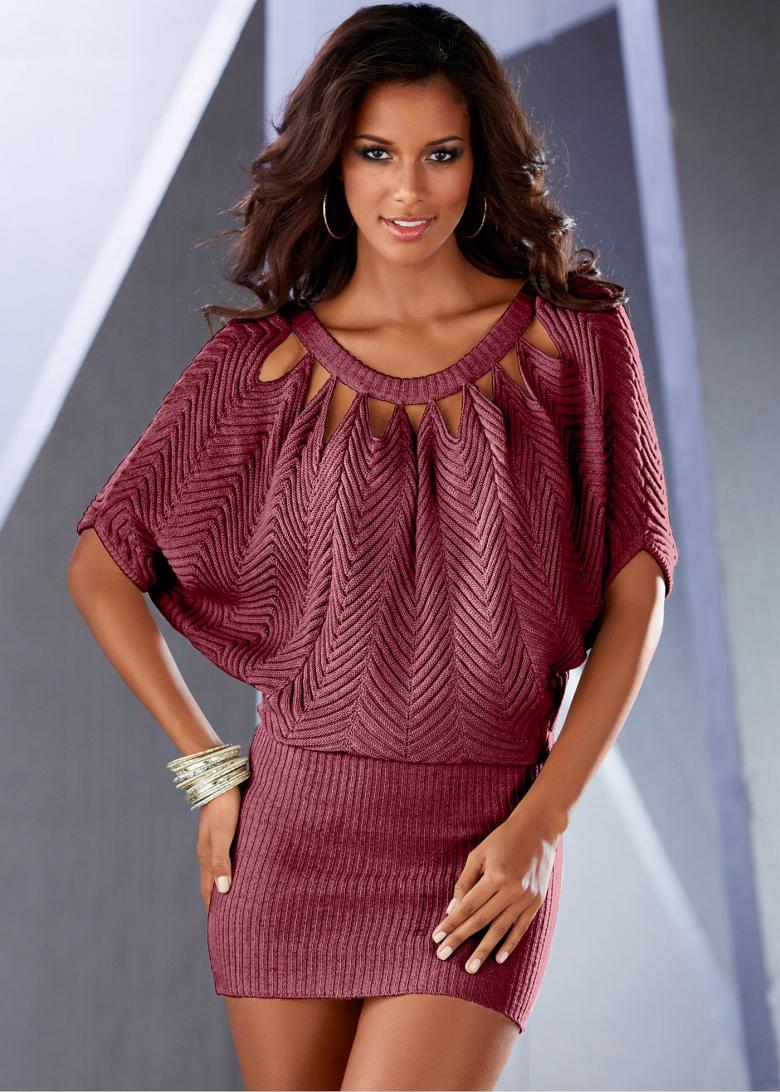
Knit the front half. Similarly knit back.
When the two parts are connected, you need to moisten them to dry in a straightened form and then carry out the assembly. To do this, you need to stitch the halves of parts with a forward needle stitch. Then, if necessary, iron out.
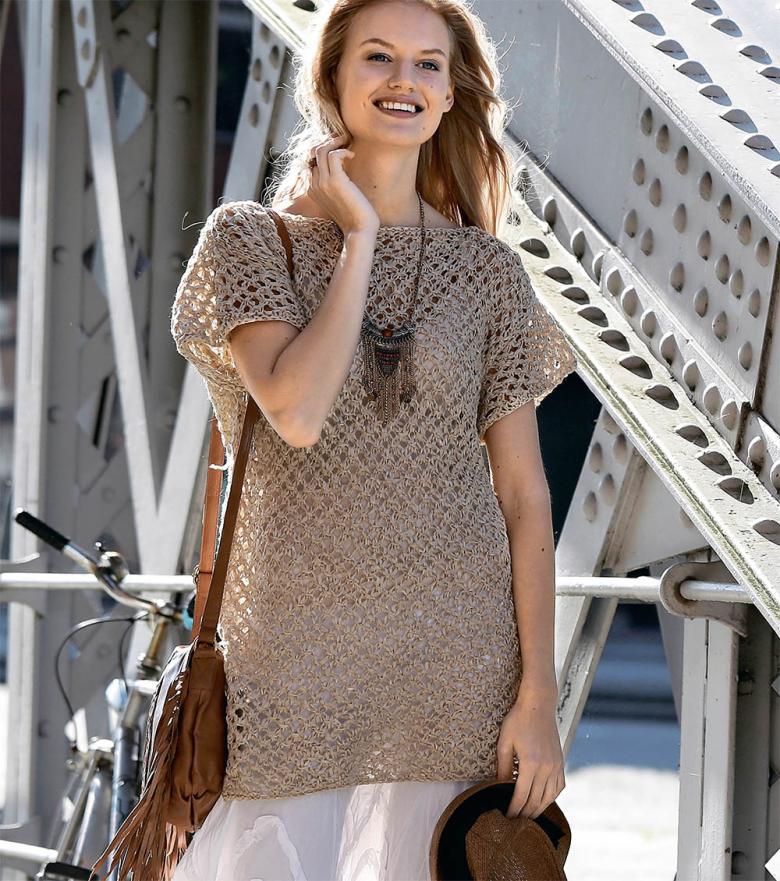
To make it easier to navigate all the necessary additions, you can use the diagram below. Here are descriptions not only of the drawing itself, but also of the basic designations of the loops used in the knitting of this tunic.

For winter tunics choose warm yarns - wool, angora, mohair, rabbit down, camel hair and yak. But you need to use thicker needles to make the tunic more puffy. And as a result it will be worn longer, as it will not roll and pile up.
This column could go on and on. After all, the number of models is really infinite.


